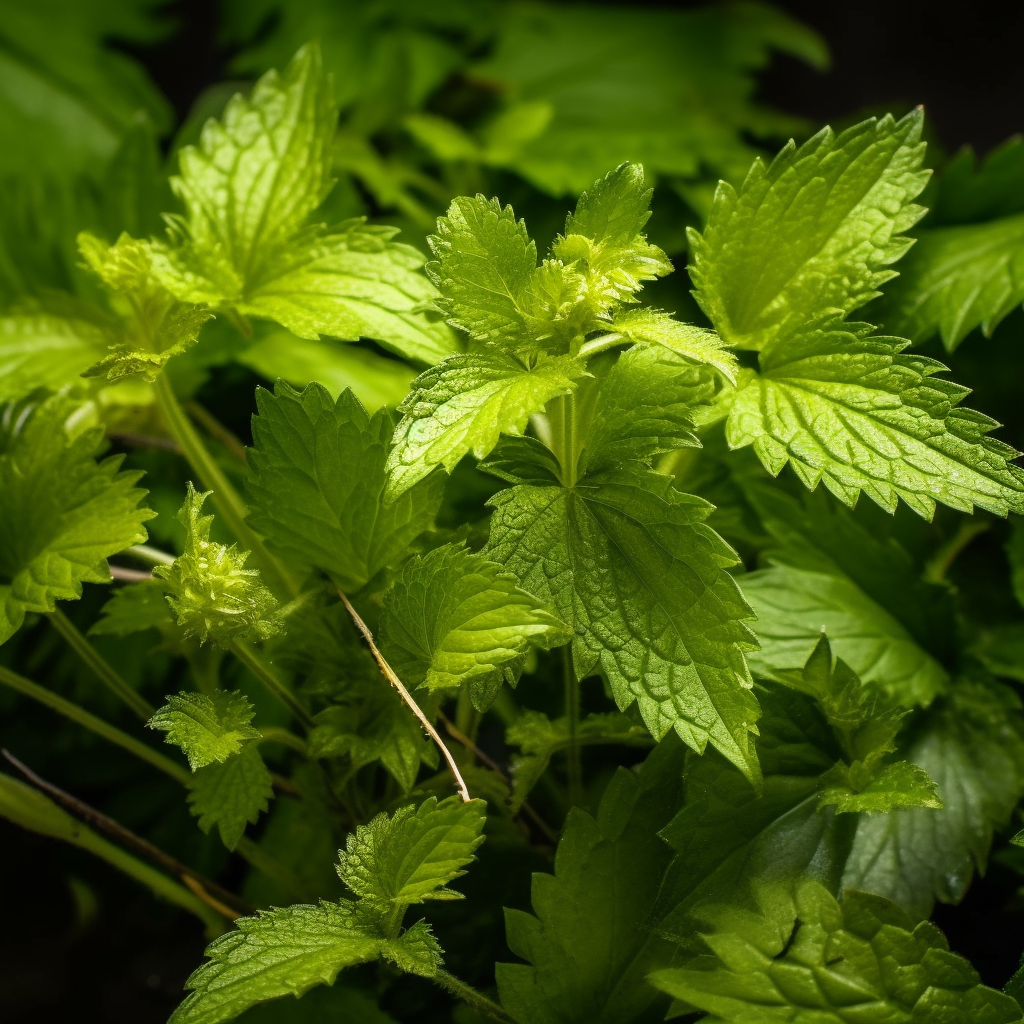
GYNOSTEMMA PENTAPHYLLUM : The Herb of Immortality 200:1
April 27, 2020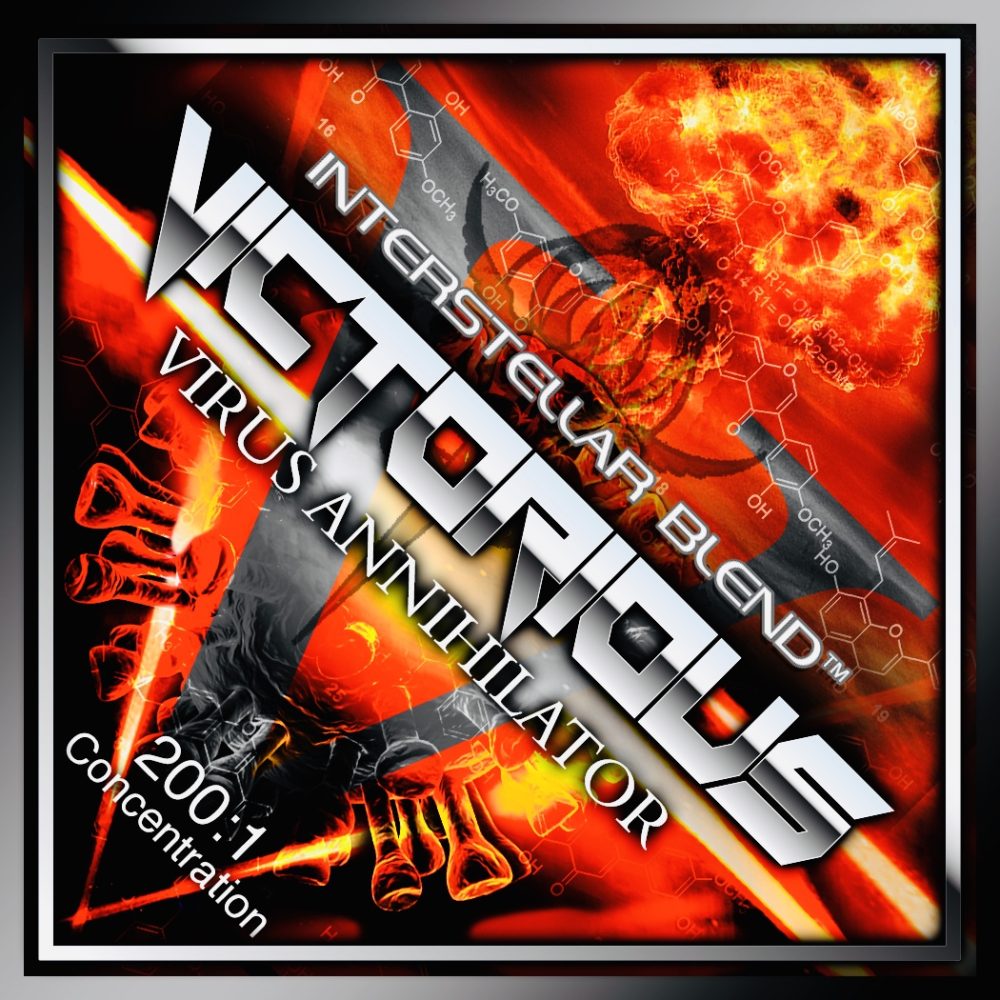
VICTORIOUS : Science Based Anti Viral Formula 200:1
July 12, 2020HYPNOTIC : Ultimate Sleep Formula 200:1
$275.00
Hypnotic
(from Greek Hypnos, sleep)
100g / 200:1 Concentration
Directions: mix 1/4 – 1/2 tsp in warm water, grapefruit juice or chamomile tea one hour before bed for ultra high quality sleep. Wake up the next morning feeling INCREDIBLE! Zero grogginess!
DEEP REJUVENATIVE SLEEP—ABSOLUTELY CRITICAL to LONGEVITY!
*For best results avoid, coffee, tea, caffeine and any other stimulants at least 4 hours before bed especially if insomnia is an issue.
FEATURING:
Acanthopanax senticosus (Rupr. Maxim.) extract
Studies of the sedative and hypnotic action of Acanthopanax senticosus
Objective: To study the sedative and hypnotic effect of Acanthopanax senticosus combined with Schisandra chinensis in mice.
Methods: Study the dose-effect relationship on Acanthopanax senticosus and Schisandra chinensis in the effect of improving sleep. By inducing dormancy of the mice with subliminal and suprathreshold dose of sodium pentobarbital adding the herbs to evaluate the sedative and hypnotic effect of these two herbs used alone or together.
Results: The best dose of Acanthopanax senticosus (16~128g/kg)which prolonged the time of falling asleep (P0.01) in mice was 64g/kg.The best dose of Acanthopanax senticosus (3~12g/kg) which shortened the duration sleep latency(P0.05)in mice was 12g/kg. Contrasting to the blank group, Acanthopanax senticosus combined with Schisandra chinensis could reduce the latent period of falling asleep (P0.01), prolong the sleep time induced by sodium pentobabital (in supra threshold dose)(P0.01), and remarkably enhance the rate of falling asleep induced by sodium pentobabital (in subthreshold dose)(P0.05). Its effect is superior to the effect of Acanthopanax senticosus or Schisandra chinensis.
Conclution: Acanthopanax senticosus combined with Schisandra chinensis had obvious effects on the sedation and hypnosis of mice.
(Aerial Parts extract)
Asperugo procumbents L. has been used in Iranian traditional medicine for the refreshing, tranquillizing and mood elevating activities. The present study was undertaken to evaluate the antidepressant and sedative–hypnotic potential of acute administration of the hydroalcoholic extract of this plant in mice. Additionally, the effects of flumazenil on the hypnotic activity of the extracts were evaluated. None of the doses of the extract could significantly reduce immobility time in comparison with control group in antidepressant tests. In hypnotic test, 250 and 400 mg/kg doses significantly increased pentobarbital-induced sleeping time compared to vehicle.
All of the doses of the extract significantly reduced the latency to sleep in comparison to the vehicle. Flumazenil reversed the augmented effects of extracts in pentobarbital-induced hypnotic test. The results of the present study indicate the low antidepressant and good sedative–hypnotic effects of the hydroalcoholic extract of Asperugo procumbens aerial parts in mice and that the central benzodiazepine receptors are involved in the sedative–hypnotic effects of this plant.
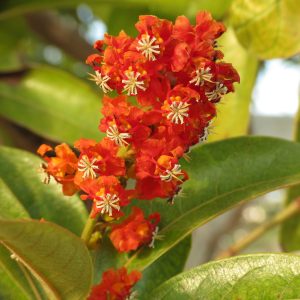
Byrsonima crassifolia Malpighiaceae
(GOLDEN SPOON EXTRACT)
Byrsonima crassifolia (Malpighiaceae) has been used in traditional medicine for the treatment of some mental-related diseases; however, its specific neuropharmacological activities remain to be defined. The present study evaluates the anxiolytic, anticonvulsant, antidepressant, sedative effects produced by the extracts of Byrsonima crassifolia, and their influence on motor activity in ICR mice. Additionally, we determine the acute toxicity profiles of the Byrsonima crassifolia extracts and the presence of neuroactive constituents. Our results show that the methanolic extract of Byrsonima crassifolia produces a significant (P < 0.05) antidepressant effect in the forced swimming test in mice at 500 mg/kg dose. However, it does not possess anxiolytic, sedative, or anticonvulsant properties, and does not cause a reduction of mice locomotion (P > 0.05).
Although the main compound of the methanolic extract was identified as quercetin 3-O-xyloside (12 mg/kg), our findings suggest that flavonoids, such as rutin (4.4 mg/kg), quercetin (1.4 mg/kg) and hesperidin (0.7 mg/kg), may be involved in the antidepressant effects. To the best of our knowledge, the present study constitutes the first report on the presence of the flavonoids with neuropharmacological activity rutin and hesperidin in Byrsonima crassifolia.
In conclusion, the present results showed that the methanolic extract standardized on flavonoids content of Byrsonima crassifolia possesses potential antidepressant-like effects in the FST in mice, and could be considered as relatively safe toxicologically with no deaths of mice when orally administered at 2000 mg/kg.
(Tuber Fleeceflower Stem extract)
The sedative–hypnotic effect of Caulis Polygoni multiflori decoction (CPMD) was studied by the rolling cylinder method in mice and by the somnopolygraphic recording method in rats. The result from the rolling method in mice showed that CPMD (9g/kg) did have synergic action with the subthreshold hypnotic dose of sodium pentobarbital (20mg/kg).
The result from the somnopolygraphic recording experiment showed that the immediate hypnotic effect of an effective dose of CPMD (20g/kg) was basically similar to that of diazepam (5mg/kg) used under the same experimental condition, chiefly an increase in the duration of slow wave sleep phase (SWS) and a decrease in the duration of paradoxical sleep phase (PS). By the end of a three-day session in dose of twice a day the hypnotic effect appeared more prominent and the reduction of SWS latency became significant.
Objective: To invest the effects of Caulis Polygoni Multiflori.decoction on sleeping state of free-moving rats.
Methods: After intragastric administration of Caulis Polygoni Multiflori.decoction(equivalent to 20g/kg crude drug) for 7 days,Polysomnography was used to record the changes of EEG of different sleeping states in rat.
Results: After administration of Caulis Polygoni Multiflori.decoction,total sleeping time was increased in free-moving rats(P0.01),SWS1 and SWS2 was obviously increased on sleeping states but REMS changed insignificantly.
Conclusion: The decoction of Caulis Polygoni Multiflori.has influence on sleeping state of normal rats and has improving-sleep effect.
Cirsiliol
Salvia guaranitica St. Hil.
Salvia guaranitica St. Hil. is a traditional medicinal plant used in Latin America as sedative. We have recently demonstrated the presence of cirsiliol in its extracts and found that this flavonoid is a competitive low affinity benzodiazepine receptor ligand (Marder et al., 1996). This report describes the pharmacological properties of Salvia guaranitica extracts and of its active principle, cirsiliol. A partially purified fraction of this plant, administered intraperitoneally in mice (in a dose equivalent to 3 g of the fresh plant), exhibited sedative and hypnotic effects as measured in the hole board and in the pentobarbital-induced sleep tests, respectively. On the other hand, this fraction had no anxiolytic or myorelaxant effects.
In the pentobarbital-induced sleep test, cirsiliol (2–10mg/kg, i. p.) exhibited a dose-dependent hypnotic action. In contrast, it did not produce myorelaxant (up to 30mg/kg) or anticonvulsant (up to 10mg/kg) effects. Cirsiliol was found to be more potent in displacing 3H Zolpidem binding (Ki = 20 LiM) than 3H flunitrazepam binding (Ki = 200 μM) to benzodiazepine receptors from rat cerebral cortex.
It is concluded that Salvia guaranitica extracts and its active principle cirsiliol, possess sedative and hypnotic properties; cirsiliol produces these effects probably acting on the so-called type I benzodiazepine receptor.
Sedative and hypnotic herbs and their use in improving sleep
(Cordyceps sinensis / MILITARIS extract)
Cordycepin Increases Nonrapid Eye Movement Sleep via Adenosine Receptors
Cordycepin (3′-deoxyadenosine) is a naturally occurring adenosine analogue and one of the bioactive constituents isolated from Cordyceps militaris/Cordyceps sinensis, species of the fungal genus Cordyceps. It has traditionally been a prized Chinese folk medicine for the human well-being. Because of similarity of chemical structure of adenosine, cordycepin has been focused on the diverse effects of the central nervous systems (CNSs), like sleep regulation. Therefore, this study was undertaken to know whether cordycepin increases the natural sleep in rats, and its effect is mediated by adenosine receptors (ARs).
Sleep was recorded using electroencephalogram (EEG) for 4 hours after oral administration of cordycepin in rats. Sleep architecture and EEG power spectra were analyzed. Cordycepin reduced sleep-wake cycles and increased nonrapid eye movement (NREM) sleep. Interestingly, cordycepin increased θ (theta) waves power density during NREM sleep. In addition, the protein levels of AR subtypes (A1, A2A, and A2B) were increased after the administration of cordycepin, especially in the rat hypothalamus which plays an important role in sleep regulation.
Therefore, we suggest that cordycepin increases theta waves power density during NREM sleep via nonspecific AR in rats. In addition, this experiment can provide basic evidence that cordycepin may be helpful for sleep-disturbed subjects.
The Chemical Constituents and Pharmacological Actions of Cordyceps sinensis
There are 18 kinds of amino acids in C. sinensis and they mainly played a sedative hypnotic effect. Tryptophan is the most effective ingredient among them. Tryptophan is the precursor of serotonin material, which has close relationship with animals’ insomnia [98]. Otherwise, glutamic acid has the effect of immune inhibition. Due to the performance of the combined effect being more complex, more research needs to be explored.
Sedatives and hypnotics made from Chinese herbal medicine show great market prospects for minor side effects and zero potential addiction. In this study, the extraction conditions of Cordyceps militaris polysaccharide (CMP) and flavonoids (CMF) were, respectively, optimized by orthogonal experiments as follows: 30:1 ratio of water to plant material, three rounds of extraction at 90 °C and 3 h for each extraction; 40:1 ratio of 70% ethanol to plant material, reflux extraction at 90 °C for 4 h.
Then, 200, 100 and 50 mg/kg of CMP and CMF were given intragastrically to mice for 30 days. The locomotor activity times of the mice were recorded on the 14th and 30th days. The effects of CMP and CMF on the sleep induced by pentobarbital sodium were observed on the 30th day. 5-Hydroxytryptamine (5-HT), acetylcholine (ACh), glutamate (Glu) and γ-aminobutyric acid (GABA) levels in the mouse brains were determined by enzyme-linked immunosorbent assay on the 30th day.
The results showed that different doses of CMP and CMF could reduce the number of locomotor activities in mice and lower the Glu level (p < 0.05 in the 50 mg/kg CMP group and p < 0.01 in the other groups), elevate the 5-HT level and reduce the ACh level (p < 0.01 only in the 200 mg/kg CMP and CMF groups) in the mouse brains. Therefore, the elevated 5-HT levels and decreased ACh and Glu levels in the brains may be the main mechanisms through which CMP and CMF exert their sedative and hypnotic effects.
(Coriander Extract)
Sedative–Hypnotic Activity of Extracts and Essential Oil of Coriander Seeds
Abstract Background: Coriandrum sativum L. has been recommended for relief of insomnia in Iranian traditional medicine. However, no pharmacological studies have yet evaluated its sedative effects. The aim of this study was to determine if extracts and essential oil of coriander seeds have sedative–hypnotic activity.
Methods: The aqueous or hydro-alcoholic extracts or essential oil of coriander seeds (100, 200, 400 and 600 mg/kg) were intraperitoneally administered to male albino mice, 30 minutes before pentobarbital injection (40 mg/kg). Latency to sleep and sleep duration were recorded.
Results: Aqueous extract prolonged pentobarbital-induced sleeping time at 200, 400 and 600 mg/kg. Hydro-alcoholic extract at doses of 400 and 600 mg/kg increased pentobarbitalinduced sleeping time compared to saline-treated group. The essential oil increased pentobarbital-induced sleeping time only at 600 mg/kg.
Conclusion: The extracts and essential oil of coriander seeds possess sedative–hypnotic activity. However, it is strongly suggested that the major active component(s) responsible for the hypnotic effect is mainly present in the aqueous extract.
Hypnotic effect of Coriandrum sativum
The aim of the present study was to evaluate hypnotic effect of Coriandrum sativum, Ziziphus jujuba, Lavandula angustifolia and Melissa officinalis hydroalcoholic extracts in mice to select the most effective ones for a combination formula. Three doses of the extracts (250, 500 and 1000 mg/kg of C. sativum and Z. jujuba and 200, 400 and 800 mg/kg of L. angustifolia and M. officinalis) were orally administered to male Swiss mice (20-25 g) and one hour later pentobarbital (50 mg/kg, i.p.) was injected to induce sleep. Onset of sleep and its duration were measured and compared.
Control animals and reference group received vehicle (10 ml/kg, p.o.) and diazepam (3 mg/kg, i.p.), respectively. C. sativum and Z. jujuba failed to change sleep parameters. L. angustifolia at doses of 200, 400 and 800 mg/kg shortened sleep onset by 7.6%, 50% and 51.5% and prolonged sleep duration by 9.9%, 43.1% and 80.2%, respectively. Compared with control group the same doses of M. officinalis also decreased sleep onset by 24.7%, 27.5% and 51.2% and prolonged sleep duration by 37.9%, 68.7% and 131.7% respectively.
Combinations of L. angustifolia and M. officinalis extracts showed additive effect and it is suggested that a preparation containing both extracts may be useful for insomnia.
Sleep-prolonging effect of Coriandrum sativum hydro-alcoholic extract in mice
The present study was planned to investigate sleep-prolonging effect of C. sativum. The hydro-alcoholic extract (HAE) and its three fractions namely water (WF), ethyl acetate (EAF) and N-butanol (NBF) were prepared from C. sativum aerial parts and administrated to mice. Also, the possible cytotoxicity of the extracts was tested using cultured PC12 cells. The HAE, EAF and NBF significantly prolonged sleep duration.
Only the NBF could significantly decrease sleep latency. No decrease in the neuronal surviving was observed either by HAE or by its fractions. The present data indicate that C. sativum exert sleep-prolonging action without major neurotoxic effect.
ANXIOLYTIC AND ANALGESIC EFFECT OF SEEDS OF CORIANDRUM SATIVUM LINN
The clinical applications of benzodiazepines as anxiolytics are limited by their unwanted side effects. Therefore, the development of new pharmacological agents is well justified. Among medicinal plants, Coriandrum sativum L. has been recommended for relief of anxiety and insomnia in Iranian folk medicine. Nevertheless, no pharmacological studies have thus far evaluated its effects on central nervous system. Therefore, the aim of this study was to examine if the aqueous extract of Coriandrum sativum seed has anxiolytic effect in mice.
Additionally, its analgesic effect was evaluated. The anxiolytic effect of aqueous extract (50, 100, 200 mg/kg, i.p.) was examined in male albino mice using elevated plus- maze as an animal model of anxiety. The effects of the extract on analgesic activity were assessed using Hot plate method. In the elevated plus-maze, aqueous extract at 200 mg/kg showed an anxiolytic effect by increasing the time spent on open arms and the percentage of open arm entries, compared to control group. Aqueous extract at 50, 100 and 200 mg/kg significantly produce analgesic activity compared to control group.
These results suggest that the aqueous extract of Coriandrum sativum seed has anxiolytic effect and may have potential sedative and muscle relaxant effects.

Corydalis yanhusuo W.T.Wang extract
Evaluation of the Anxiolytic Properties of Tetrahydropalmatine, a Corydalis Yanhusuo Compound
The purpose of this study was to investigate the anxiolytic effects of tetrahydropalmatine (THP) and its potential interaction with the benzodiazepine binding site on the gamma-aminobutyric acid (GABAA) receptor in the male Sprague-Dawley rat. Tetrahydropalmatine (THP), an active component isolated from the Chinese herbal plant Corydalis yanhusuo, is used in Asia for its analgesic, sedative, and hypnotic properties during herbal therapy. Fifty-five rats were assigned to 1 of 5 groups with 11 rats per group: 1) control (vehicle), 2) THP, 3) midazolam, 4) midazolam with THP, and 5) flumazenil with THP.
In this study, the elevated plus-maze measured the behavioral components of anxiety and motor movements. The data were analyzed using a 2-tailed multivariate analysis of variance to determine if a significant difference existed followed by the least significant difference post hoc test. The findings suggest that THP, 25 mg/kg, given via intraperitoneal injection, results in significant anxiolysis and decreased motor movements. Furthermore, flumazenil, 3 mg/kg, does not fully antagonize the effects of THP.
Rational: Levo-tetrahydropalmatine (l-THP), an active ingredient of Corydalis yanhusuo, has been reported to be a partial agonist for dopamine D1 receptors (D1R) and an antagonist for D2R. Although it has been safely used clinically in China for decades as an analgesic with sedative/hypnotic properties, there are few studies that address the mechanisms by which l-THP exerts its beneficial effects in chronic pain-induced sleep disturbance.
Objectives: To investigate the effects and mechanisms of l-THP on sleep disturbance in a neuropathic pain-like condition.
Methods: A mouse model of chronic neuropathic pain induced by partial sciatic nerve ligation (PSNL) was employed. The antinociceptive and hypnotic effects of l-THP were evaluated by measurement of mechanical allodynia, thermal hyperalgesia, and electroencephalogram (EEG) recordings in PSNL mice. Pharmacological approaches and c-Fos expression were used to clarify the mechanisms of l-THP.
Results: Intraperitoneal injection of l-THP at 5 and 10 mg/kg not only significantly increased the mechanical threshold by 134.4% and 174.8%, and prolonged the thermal latency by 49.4% and 69.2%, but also increased non-rapid eye movement sleep by 17.5% and 29.6%, and decreased sleep fragmentation in PSNL mice, compared with the vehicle control. Moreover, the antinociceptive effect of l-THP was prevented by D1R antagonist SCH23390 or D2R agonist quinpirole; meanwhile, the hypnotic effect of l-THP was blocked by quinpirole rather than by SCH23390. Immunohistochemistry demonstrated that l-THP inhibited c-Fos overexpression induced by PSNL in the cingulate cortex and the periaqueductal gray.
Conclusions: These findings indicated that l-THP exerted analgesic effects by agonism D1R and antagonism D2R, and the antagonism of D2R mediated the hypnotic effect of l-THP in PSNL mice.
Anxiolytic-like action of orally administered dl-tetrahydropalmatine in elevated plus-maze
dl-Tetrahydropalmatine (dl-THP), a naturally occurring alkaloid, has been intensively studied for its sedative and hypnotic effects. Putative explanation for its mechanism and target of action involves the dopaminergic neurotransmission system. In view of the close interactions between the dopaminergic and the GABAergic neurons in the amygdala, pharmacological effects of dl-THP were tested for activity at the GABAA receptor benzodiazepine site (BDS).
Effects of dl-THP were examined in mice employing the elevated plus-maze, the holeboard and the horizontal-wire tests. In the elevated plus-maze, mice treated with low doses of dl-THP (0.5–10 mg/kg) exhibited significant increase in the percentage of entries and time spent in open arms without altering the number of closed-arm entries when compared to the control group, indicative of its selective anxiolytic effect.
In the holeboard and horizontal wire tests, where exploratory behavior and potential muscle relaxant effect were assessed, respectively, only mice treated with as much as 50 mg/kg dl-THP manifested sedation and myorelaxation, as observed in the significant decrease in the number of head dips and the decrease in the percentage of mice grasping wire in comparison to control. Notably, coadministration of the BDS antagonist flumazenil abolished the dl-THP-induced anxiolysis as seen in the reversal of the increase of both the number of entries and time spent in open arms back to basal levels in the elevated plus-maze test. The results suggest that dl-THP at defined low dosages acts as anxiolytics in mice, and the BDS mediates, at least in part, such anxiolytic effect of dl-THP.
Echium italicum L. (Aerial parts)
Research in the area of herbal psychopharmacology has clearly improved in recent decades. Self-administration of herbal medicines has been the most popular therapeutic alternative to standard medicine.
Since the extract of Echium amoenum exhibits an anxiolytic effect, the aim of this study is to evaluate the anxiolytic and hypnotic effects in mice of the aqueous and ethanolic extracts of aerial parts of E. italicum, a member of the Boraginaceae family.
Mice were administered the agents intraperitoneally before the start of the experiments for evaluation of hypnotic activity (induced by sodium pentobarbital, 30 mg/kg, i.p.), anxiolytic activity (elevated plus-maze [EPM] test), locomotor activity (open field test), and motor coordination (rotarod test).
The ethanolic and aqueous extracts of E. italicum, at doses of 1.2 and 2.1 g/kg, increased the percentage of time-spent and the percentage of arm entries in the open arms of the EPM and decreased the percentage of time-spent in the closed arms of the EPM. Moreover, both extracts decreased the pentobarbital-induced latency to sleep and significantly increased the total sleeping time induced by pentobarbital. In addition, locomotor activity was affected by aqueous extracts and ethanolic extract (at higher doses). Both extracts showed no effect in the rotarod test.
Conclusions: These results suggest that both ethanolic and aqueous extracts of E. italicum may have anxiolytic effects and sedative activity but no effect on muscle relaxation.
Involvement of the GABAergic system in the anxiolytic-like effect of the flavonoid ellagic acid
Anxiolytic-like effects of dietary flavonoids are relatively well known. Ellagic acid is a naturally occurring flavonoid compound which is abundant in many plants and fruits. The present study was designed to investigate the antianxiety-like effect of ellagic acid in mice using an elevated plus-maze test. The involvement of the GABAergic and serotonergic systems in the antianxiety-like activity of ellagic acid was also studied. Our results showed that ellagic acid treatment (25, 50 and 100 mg/kg, p.o.), produced a significant increase in the percentage of time spent and entry into the open arms, with a profile comparable to that of diazepam (1 mg/kg, p.o.).
Unlike diazepam, the anxiolytic doses of ellagic acid did not prolong the duration of sodium thiopental-induced loss of righting reflex, indicating that this flavonoid is non-hypnotic. The anxiolytic effect observed with ellagic acid treatment (25 mg/kg, p.o.) was antagonized by pretreatment with picrotoxin (a non-competitive GABAA receptor antagonist, 1 mg/kg, i.p.) and flumazenil (a benzodiazepine site antagonist, 1 mg/kg, i.p.) but not with p-chlorophenylalanine (a serotonin synthesis inhibitor, 100 mg/kg, i.p.) and pindolol (a β-adrenoceptors blocker/5-HT1A/1B receptor antagonist, 10 mg/kg, i.p.).
Taken together, the data demonstrated that acute and chronic administration of ellagic acid to mice has produced antianxiety-like effect when tested in the elevated plus-maze. The experiments with different receptor blockers suggest an involvement of GABAergic system in the anxiolytic action of this bioflavonoid. However, this action is not seems to be mediated through serotonergic system.
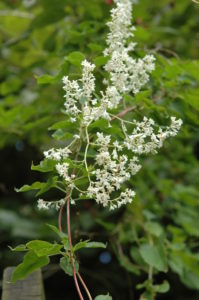
Fallopia multiflora (Thunb.) Harald. extract
Research Progress of Chinese Herbal Medicines with the Function of Improving Sleep Quality
With the problem of insomnia becoming more serious and the disadvantages of sedative and hypnotic drugs gotten by chemical synthesis becoming more obvious, Chinese herbal medicines with the function of improving sleep quality are getting more and more attention. A large number of Chinese herbal medicines with the function of improving sleep quality were found and proved. These Chinese herbal medicines have the advantages of wide sources, high safety, little side effects, no dependence and so on.
They have become the main objects of the domestic and foreign scholars. In this paper, Chinese herbal medicines with the function of improving sleep quality were summarized and the kinds of Chinese herbal medicines, active ingredients, extraction methods, assay methods of the function of improving sleep quality and mechanism of action were introduced.
Chinese medicines with sedative–hypnotic effects and their active components
The main pharmacological effects of sedative agents are sedation,hypnosis, antianxiety, and antidepression. Traditional Chinese medicine (TCM) has a long history of clinical experience in treating insomnia. This review focuses mainly on the role of active ingredients from TCM in the treatment of insomnia. Single herbs and their active ingredients from TCM withhypnoticeffects are summarized through reviewing the relevant literature published in the past 20 y. The active ingredients are divided into alkaloids, terpenoids, and volatile oils, flavonoids, lignanoids and coumarins, saponins, and others.
Current studies on TCM in treating insomnia are described from the aspects of active ingredients, sources, experimental models and methods, results, and mechanisms. In addition, Chinese compound prescriptions developed from a variety of single herbs with sedative–hypnotic effects are introduced. The acting pathways of TCM are covered from the perspectives of regulating central neurotransmitters, influencing sleep-related cytokines, and improving the structure of the central nervous system.
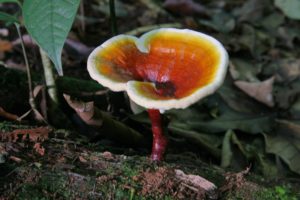
Ganoderma LUCIDUM extract Polysaccharide
Ganoderma has multiple pharmacological activities and clinical uses. The aqueous extract of G. lucidum (Curt.: Fr.) P. Karst. spores also has many pharmacological activities and clinical uses. The injection made from the spores of G. lucidum (called Jisheng injection) has been used clinically for more than 20 years for its therapeutic effects on several neuromuscular disorders such as myotonia and polymyositis. Jisheng injection can gradually improve a patient’s sleep and enhance appetite after he or she takes it for about 2 weeks. To determine the pharmacological bases of the clinical effect of Jisheng injection in improving patients’ sleep, the authors investigated the hypnotic and sedative effects of Jisheng injection on the central nervous system in mice.
The results are as follows: (1) subcutaneous injection of Jisheng extract significantly prolonged the sleeping time induced by both sodium pentobarbital and barbital in mice in a dose-dependent manner; (2) Jisheng extract also induced sleep in mice after intraperitoneal injection of a subthreshold dose of pentobarbital which could not induce sleep in normal mice; (3) repeated injection of the effectively hypnotic dosage of Jisheng extract once daily for 8 consecutive days did not induce addiction, as the prolonging effect of Jisheng on pentobarbital sleeping time was not shortened, whereas the chemical hypnotic drug diazepam induced addiction after repeated injection for 8 days; and (4) Jisheng injection markedly decreased the spontaneous motor activity in mice.
It may be concluded from these results that the aqueous extract of G. lucidum spores has hypnotic and sedative actions on the central nervous system in mice.
Inflammation and insomnia are two types of symptoms very likely occur in life, seriously perplexing people’s work and life. How to alleviate these symptoms is an urgent medical problem. Lucidone D (LUC) is a terpene from the ethanol extract of Ganoderma lucidum fruiting body. Triterpenoids are also the main pharmacological components of Ganoderma lucidum. In recent years, people pay more and more attention to its anti-inflammatory effect. In this study, LPS induced RAW264.7 macrophage inflammatory response model was used to evaluate the anti-inflammatory activity of LUC.
The results showed that LUC could significantly inhibit the production of inflammatory mediators NO, which may play a role by down-regulating the expression level of iNOS and COX-2 proteins. Meanwhile, the production of TNF-α and IL-6 was significantly inhibited. These results indicate that LUC has obvious anti-inflammatory activity. Writhing and sedation tests in ICR male mice showed that LUC showed significant analgesic and sedative effects.
In conclusion, these results suggest the anti-inflammatory, analgesic and sedative effects of LUC in vitro and in vivo.
Extract of Ganoderma lucidum prolongs sleep time
These results suggest that GLE has hypnotic effects in freely moving rats. The mechanism by which the extract promoted sleep remains unclear, but this effect appears to be primarily related to the modulation of cytokines such as TNF-α. Furthermore, these data at least partially support the ethnomedical use of Ganoderma lucidum.
Objective To investigate the sedative and hypnotic effects of Ganoderma lucidum brewage(GLB).Methods The NIH mice were given with gavage of GLB 0.06,0.12,and 0.24g/kg per day respectively for 15 days.The spontaneous motion,the sleeping time induced by pentobarbital sodium in subthreshold dosage and threshold dosage,and the number of mice subjected to pentylenetetrazol-induced convulsion were observed.
Results GLB can reduce the spontaneous motion,significantly longthen the mice sleeping time of pentobarbital sodium in threshold dosage and increase the number of sleeping mice under subthreshold dosage of pentobarbital sodium.GLB was synergic with pentobarbital sodium,and antagonized pentylenetetrazol-induced convulsion in a dose-dependent manner.Conclusion GLB possesses obvious sedative, hypnotic and anticonvulsive effects.
Inflammation and insomnia are two types of symptoms very likely occur in life, seriously perplexing people’s work and life. How to alleviate these symptoms is an urgent medical problem. Lucidone D (LUC) is a terpene from the ethanol extract of Ganoderma lucidum fruiting body. Triterpenoids are also the main pharmacological components of Ganoderma lucidum. In recent years, people pay more and more attention to its anti-inflammatory effect. In this study, LPS induced RAW264.7 macrophage inflammatory response model was used to evaluate the anti-inflammatory activity of LUC. The results showed that LUC could significantly inhibit the production of inflammatory mediators NO, which may play a role by down-regulating the expression level of iNOS and COX-2 proteins.
Meanwhile, the production of TNF-α and IL-6 was significantly inhibited. These results indicate that LUC has obvious anti-inflammatory activity. Writhing and sedation tests in ICR male mice showed that LUC showed significant analgesic and sedative effects. In conclusion, these results suggest the anti-inflammatory, analgesic and sedative effects of LUC in vitro and in vivo.
(Gastrodia elata extract)
NHBA isolated from Gastrodia elata exerts sedative and hypnotic effects
Highlights
► NHBA, active compound of Gastrodia elata, possesses sedative and hypnotic effects. ► Adenosine A1/A2A receptors may be involved in the hypnotic effect of NHBA. ► NHBA significantly activates the sleep center VLPO in the anterior hypothalamus.
Gastrodin have been extensively investigated on its biological actions. As a result, numerous pharmacological activities have been attributed to gastrodin, including sedative, hypnotic (Deng and Mo, 1979), anti-vertigo (Chen et al., 2004), analgesic (Zhang et al., 2006), anti-epileptic (Ojemann et al., 2006), antidepressant (Chen and Sheen, 2011), anxiolytic (Peng et al., 2013), memory-improving (Hsieh et al., 1997), anti-aging (Wang Z. J. et al., 2007), lowering blood pressure (Zhang Q. et al., 2008), preventing osteonecrosis (Zheng et al., 2014) effects, etc.
Among its various pharmacological properties, its strong actions in CNS diseases appear to be particularly prominent. Considering its low toxicity and remarkable pharmacological performance, gastrodin might be a potential valuable therapeutic for the prevention and treatment of some CNS disorders (Zhan et al., 2016).
Gastrodin is extracted from Gastrodia elata, which is widely used for the treatment of vertigo, headache, neuralgia, neurasthenia syndrome, and brain traumatic syndrome. Studies showed that gastrodin has many pharmacological effects, including hypnosis, sedation, and anticonvulsive.
(Gardenia extract)
Ethanol Extract of Gardenia augusta (L.) Merr. Flowers Produces Sleep Improvement
Sleep disorder may have detrimental consequences on health and one of the treatments is the use of hypnotics. Unfortunately, hypnotics treatment may also be accompanied by side effects and lead to dependence. The present study aimed to investigate the sleep improving effects of ethanol extract of Gardenia augusta (L.) Merr. flowers in rat model.
Methods: Rats were assigned into group receiving the extract (at 0.9 or 1.8 g/kg), the reference drug crocetin (at 0.9 mg/kg) or vehicle, once a day orally for 15 days.
Results: Tested on day 1 and 14 of treatment, the rats receiving 1.8 g/kg of the extract showed improvements in sleep latency, sleep duration, sleep efficiency, wake episodes, and sleep cycle, which were significantly different from crocetin. Furthermore, tested on day 2 and 15 of treatment, the rats treated with 1.8 g/kg extract demonstrated superior sedative rating scale compared to crocetin.
Conclusions: Results of the present study indicates the potential of Gardenia augusta (L.) Merr. flower extract to be used as an adjunct treatment for sleep disorder. Key words: Sleep, Improvement, Gardenia augusta (L.) Merr., Flowers, Rats.
(sage Herb Extract)
PHARMACOLOGICAL ASSESSMENT OF HISPIDULIN – A NATURAL BIOACTIVE FLAVONE
The literature (98) has reported sedative–hypnotic activity of hispidulin. Plentiful flavonoids from terrestrial plants have been reported with their affinity for BZD site of GABAA receptors (99). In vitro analysis of different substitutions particularly on flavone structure for their affinity to BZD site of GABAA receptor has also been reported (100); an increase in binding affinity has been stated for 6- methoxylation (hispidulin), whereas 7- or 3- methoxylation resulted in significant decrease in activity (see Fig. 2).
This makes hispidulin superior compared to crisimaritin (7-methoxy compound) and galangin-3-methyl ether (3-methoxy compound) in binding affinity for BZD site of GABAA receptor. Hispidulin has also been reported from sedative plants with binding affinity value of 8 µM (89). In traditional medicine, this plant is applied as a sedative, hypnotic, expectorant, coughs suppressant, purgative, diuretic, antiseptic, vasorelaxant, and antispasmodic (9).
(Glycyrrhiza glabra)
Licorice (Glycyrrhiza glabra, GG) is one of the most frequently used herbal medicines worldwide, and its various biological activities have been widely studied. GG is reported to have neurological properties such as antidepressant, anxiolytic, and anticonvulsant effects. However, its hypnotic effects and the mechanism of GG and its active compounds have not yet been demonstrated. In this study, GG ethanol extract (GGE) dose-dependently potentiated pentobarbital-induced sleep and increased the amount of non-rapid eye movement sleep in mice without decreasing delta activity.
The hypnotic effect of GGE was completely inhibited by flumazenil, which is a well-known γ-aminobutyric acid type A-benzodiazepine (GABAA-BZD) receptor antagonist, similar to other GABAA-BZD receptor agonists (e.g., diazepam and zolpidem). The major flavonoid glabrol was isolated from the flavonoid-rich fraction of GGE; it inhibited [3H] flumazenil binding to the GABAA-BZD receptors in rat cerebral cortex membrane with a binding affinity (Ki) of 1.63 μM.
The molecular structure and pharmacophore model of glabrol and liquiritigenin indicate that the isoprenyl groups of glabrol may play a key role in binding to GABAA-BZD receptors. Glabrol increased sleep duration and decreased sleep latency in a dose-dependent manner (5, 10, 25, and 50 mg/kg); its hypnotic effect was also blocked by flumazenil. The results imply that GGE and its flavonoid glabrol induce sleep via a positive allosteric modulation of GABAA-BZD receptors.

Jasminum grandiflorum / Officinale
(Spanish Royal Catalan jasmine)
POTENTIATING EFFECTS OF AERIAL PARTS OFJASMINUM OFFICINALLE ON SLEEP
Phytol, a diterpenoid isolated from the ethanolic fraction of Jasminum officinalle was found to raise the levels of gamma-aminobutyric acid, a sleep promoting neurotransmitter, in the brain (Bang et al., 2012). The calculated LD50 and the acute toxicity both invivo and invitro study indicates that the plant is safe and have a wild range of therapeutic dose. Therefore, the hypnotic effect of Jasminum officinalle accompanied with no neurotoxicity, leading to further support of its safety.
In conclusion, results obtained in the study is achieved or set up for the first time to demonstrate the jasmine prolongation of the induction in the sleeping period behavior caused by pentobarbital in experimental animals model. The sleep prolonging effect was comparable to that of induced by diazepam and accompanied with no neuron toxicity.
The most chemical constituents shows the hypnotic activity is non-polar agents found in NBF. Isolation of the exact component that produce and yield a new sedative–hypnotic drug is required in future.
Potentiating effects of Lactuca serriola on sleep.
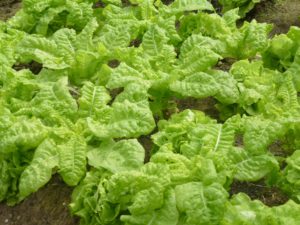
Lilium lancifolium Thunb. extract
Nine Lilium samples (belong to 6 different cultivars with different maturity stage) were qualitatively and quantitatively analyzed of total phenolics (TP), total flavonoids (TF), total saponins (TS), total carbohydrates (TC, polysaccharides), and soluble proteins contents (SP), and the monomeric components were quantified utilizing high‐performance liquid chromatography with photodiode array detector (HPLC‐PAD) associated with liquid chromatography–mass spectrometry (HPLC‐MS).
Antioxidant activity (reducing power and DPPH radical scavenging activity), anti‐inflammatory (xylene‐induced mouse ear edema detumescent assay and carrageenan‐induced mouse paw edema detumescent assay), and sedative‐hypnotic capacities (sodium pentobarbital‐induced sleep assay) were comparatively evaluated in mouse model. Additionally, correlation analysis and principal component analysis were carried out to detect clustering and elucidate relationships between components’ concentrations and bioactivities to clarify the role of effective composition. Lilium bulbs in later maturity stage preliminary evidenced higher saponins content, and lower phenolic acids and flavonoids content.
The result demonstrated that Lilium bulbs generally had distinct antioxidant, anti‐inflammatory, and sedative‐hypnotic capacities. Varieties statistically differed (P < 0.05) in chemical composition and bioactivities. Lilium varieties of Dongbei and Lanzhou presented potent sedative‐hypnotic effect and anti‐inflammatory activity. The antioxidant capacity was related to the phenolic acids and flavonoids contents, the anti‐inflammatory and sedative‐hypnotic capacities were related to the saponins content.
This is first study presenting comprehensive description of common edible Lilium bulbs’ chemical compositions, sedative‐hypnotic, and anti‐inflammatory capacities grown in China. It would informatively benefit the genetic selection and cultivated optimization of Lilium varieties to improve nutritional quality, and promote Lilium bulbs as a therapeutic functional food worldwide.
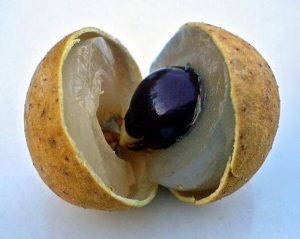
mother of pearl
(hyriopsis cumingii)
Anticonvulsant and sedative–hypnotic activity screening of pearl and nacre (mother of pearl)
Pearl and nacre are valuable traditional medicines to treat palpitations, convulsions or epilepsy in China for thousands of years. However, the active ingredients are not clear till now. The main purpose of the current investigation was to assess the anticonvulsant and sedative–hypnotic activity of pearl powder and nacre powder, including their corresponding 6 protein extracts.
Determination of the amino acid composition of the obtained protein was carried out by ultra-performance liquid chromatography (UPLC) combined with 6-aminoquinolyl-N-hydroxysuccinimidyl carbamate (AQC) pre-column derivatisation. The influence of the tested drugs on locomotor activity and convulsions latency was recorded. The contents of 5-Hydroxytryptamine (5-HT) and γ-aminobutyric acid (GABA) in brain were detected by enzyme-linked immunesorbent assay (ELISA) kits. In addition, immunohistochemistry was carried out to evaluate the changes of 5-HT3 and GABAB. In parallel, the expressions of them were demonstrated by western blot.
The obtained data suggested that pearl original powder (1.1 g/kg), pearl water-soluble protein (0.2 g/kg), pearl acid-soluble protein (0.275 g/kg), pearl conchiolin protein (1.1 g/kg), nacre original powder (1.1 g/kg), nacre water-soluble protein (0.2 g/kg), nacre acid-soluble protein (0.7 g/kg) and nacre conchiolin protein (1.1 g/kg) could down-regulate the expression of 5-HT3 and up-regulate the level of GABAB to varying degrees compared with the control group. Besides, drug administration also reduced the locomotor activity and increased convulsions latency with a certain mortality.
These findings correlated with the traditional use of pearl and nacre as sedation and tranquilization agents, thus making them interesting sources for further drug development and also providing critical important evidence for the selection of quality control markers.
Myrtus communis
Hypnotic effect of the essential oil from the leaves of Myrtus communis on mice
This study, deploying different animal models of sedatives and hypnotics, significantly supports the Ethiopian traditional medicine claim that the EO of M. communis can be used as an adjunct for the treatment of insomnia. The EO of M. communis prolongs sleep duration and reduces sleep latency in mice, but it could not induce sleep by itself.
In addition, the EO depresses CNS activity as shown from the negative results in the chimney and traction tests. EO of M. communis may be considered an alternative adjunct for treatment of insomnia (especially when it is associated with sleep maintenance problems), as it appears to be well tolerated in mice even at higher doses.
The present study showed that O. basilicum further enhances sleep behavior, confirming that this plant has a hypnotic action as claimed in traditional medicine. To our knowledge, this is the first pharmacological study showing the effects of the macerated extract of this plant on sleep duration and sleep latency. Also, this is the first work to determine the LD50 value for HAE of O. basilicum and to assess possible cytotoxicity of this extract on neuronal cells. Yet, results of this study are preliminary and need to be confirmed by further clinical trials.
The hypnotic assessment method was based on prolongation of sleep induced by pentobarbital, which is the most commonly used method for screening sedative–hypnotic agents (11–13). In agreement with the previously published works and as expected, diazepam significantly increased pentobarbital-induced sleeping time, indicating that our study method was optimized (17, 18). The effect of HAE of O. basilicum on sleep latency was lower than that of diazepam. However, the sleep-prolonging effect of HAE was comparable to that of diazepam, and, even at a dose of 50 mg/kg, HAE had a greater effect. Also, the hypnotic effect of HAE of O. basilicum is greater when compared with the effect of essential oil of O. basilicum reported by Ismail (4-fold and 2-fold increase in sleep duration, respectively) (7).
According to our results, the hypnotic effect of HAE was not dose-dependent in the range of given doses, and the maximum effect occurred with a dose of 50 mg/kg. Therefore, we used this dose to investigate the effects of different fractions of HAE. The fractions of HAE were prepared to obtain better insight into the nature of compounds responsible for the hypnotic effect of O. basilicum: 1, WF which extracts water-soluble constituents (e.g., glycosides, quaternary alkaloids, tannins); 2, EAF which extracts compounds of intermediate polarity (e.g., some flavonoids); and 3, NBF which extracts low polar agents (e.g., sterols, alkanes, and some terpenoids) (19, 20). Although WF, EAF, and NBF at a dose of 50 mg/kg were all able to increase sleep duration, not one of them could enhance sleep duration to the level induced by 50 mg/kg of HAE.
Because HAE contains the active constituents of all the above-mentioned fractions, it can be concluded that an additive effect was caused by the interaction between these constituents when HAE was administrated. Therefore, both polar and non-polar constituents in O. basilicum extract are involved in the sleep-prolonging effect of this plant. Among WF, EAF, and NBF fractions, NBF not only induced the maximum prolongation of sleep duration, but also was the only fraction to induce a significant decrease in sleep latency. On the other hand, EAF failed to show any effect on sleep latency. Therefore, NBF contains a higher concentration of constituents responsible for the hypnotic effect of O. basilicum.
A wide variety of phytochemicals has been reported to have sedative–hypnotic effects. These include terpenoids (e.g., linalool, eugenol), flavonoids (e.g., quercetrin, luteolin), alkaloids (e.g., rosmarinic acid), steroids (e.g., beta-sitisterol), and saponins (21, 22). It has been shown that O. basilicum contains high amounts of linalool, eugenol, and rosmarinic acid (7). Linck and coworkers demonstrated that linalool increases barbiturate-induced sleeping time in mice (23). Similarly, the sleep-prolonging effect of eugenol was reported by Sharma et al. (22). Rosmarinic acid is found in methanolic extract of O. basilicum and can be isolated from the NBF of plant extracts (24, 25). It plays a major role in the sedative–hypnotic actions of some medicinal plants (26).
Several neurotransmitters are involved in the regulation of sleep behavior. Neurons located in the anterior hypothalamus release gamma-aminobutyric acid (GABA) to inhibit wake-promoting areas in the hypothalamus and brainstem (27, 28). Barbiturates such as pentobarbital act on the GABA receptor’s ionophore complex and favor the binding of GABA. Benzodiazepines such as diazepam increase the affinity of GABA for its receptor and thereby enhance pentobarbital-induced sleeping time (29). Consistent with this, we observed that pretreatment of mice with flumazenil decreases the sleep-prolonging effect of diazepam.
Also, we found that flumazenil inhibits the hypnotic effect of O. basilicum extract. In agreement with our finding, Awad et al. reported that rosmarinic acid, which is found in the extract of O. basilicum, can act as a GABA transaminase inhibitor and therefore increases the brain level of GABA (30). Therefore, it is rational to suggest that the sleep-prolonging effect of O. basilicum is mediated, at least in part, through the potentiating of the GABAergic system. It is now accepted that some natural compounds interact with the GABAergic system to increase sleep behavior (31, 32).
The toxicity assay showed that the LD50 value for HAE of O. basilicum is 2.4 g/kg. This dose is far from its hypnotic doses (25 – 100 mg/kg). Also, HAE, even at high concentrations, did not decrease the viability of neuronal and fibroblast cells. Therefore, it seems that the hypnotic effect of O. basilicum is not accompanied by neurotoxicity.
In conclusion, present data demonstrated that the macerated extract of O. basilicum potentiates sleeping behaviors without any cytotoxicity. The compounds responsible for this effect are mainly found in NBF. Isolation of the active compounds may yield a novel sedative–hypnotic agent.
Ophiopogon Japonicus
Origanum Majorana extract
The Anxiolytic and Hypnotic Effects of Origanum majorana
Background and Aim: Previous studies have reported several pharmacological properties, including anticonvulsant, analgesic, sedative, and antidepressant-like effects, for Origanum majorana. Likewise, the aim of the present study was to compare the anxiolytic and hypnotic properties of Origanum majorana essential oil (OMEO) and alprazolam in male mice.
Materials and Methods: In this experimental research, 60 male NMRI mice were divided into 10 groups of six mice. In both of the experiments, negative control groups received vehicle (10 ml/kg), positive control groups received alprazolam (0.5 mg/kg), and treatment groups received OMEO (10, 20 and 40 mg/kg). For assessing the anxiolytic effects, the elevated plus maze (EPM) test was used to record the number of entries and the time spent in the open and closed arms. Moreover, the onset and duration of the sleep were recorded by the use of ketamine-induced sleeping time test in order to evaluate the hypnotic effects. Finally, one-way ANOVA, and subsequently post hoc Tukey’s test were utilized to carry out the statistical analysis.
Results: All doses of OMEO and alprazolam, compared to the control group, raised the number of entries and the time spent in the open arms and, conversely, decreased the number of entries and the time spent in the closed arms. Furthermore, similar to alprazolam, all doses of the essential oil reduced the onset of sleeping and raised the duration of sleep.
Conclusion: The results indicated that the OMEO could have anxiolytic and hypnotic effects.
Effect of a medicinal plant (Passiflora incarnata L) on sleep
Extracts of the plant Passiflora incarnata L. (Passifloraceae) were administered intraperitoneally in order to test its effects on sleep.
Experiments were carried out on chronically implanted male adult wistar rats to obtain cerebral (EEG), ocular (EOG) and muscular (EMG) activities throughout their states of vigilance. Polygraphic recordings were taken during 9 continuous hours before and after the extract administration (500 mg/kg).
Passiflora incarnata induced a significant increment in the total sleep time (p<0.05). This increment was due to an increase in the time spent by animals in slow wave sleep (SWS). Concomitantly, a significant decrement in wakefulness (W) was observed (p<0.05). In contrast, time spent in rapid eye movement (REM) sleep showed a decreasing tendency, since both its frequency and mean duration were reduced.
The extracts obtained from Passiflora incarnata can be considered as appropriated sleep inducers.
The employment of vegetable products may be an adequate approach for insomnia treatment. Previous studies indicate that the plant Valeriana officinalis L. has been utilized for treatment of insomniac patients. Subjective analysis indicates a shortening of the sleep latency, a decrease in number of awakenings through the night and feelings of having a repairing sleep after administration of the extracts of this plant14.
Behavioral studies using other plants indicate that Tilia tormentosa and Passiflora officinalis are able to induce sleep in a way similar to that under physiological conditions15.
Extracts from passion flower (Passiflora incarnata) have been used in patients to reduce anxiety and insomnia13. This has been corroborated by mean numerous behavioral studies in rodents which demonstrate a reduced anxiety and stress with passion flower treatment16. However, slight effects were observed on total times of non-REM sleep and REM sleep when administered in sleep-disturbed model rats17.
The results obtained in this experimental work by means of electrophysiological techniques support the behavioral observations related to the hypnotic effects induced by the administration of extracts from Passiflora incarnata18. The used experimental approach allowed us to determine the precise state of vigilance affected by this extract. Similarly, we were able to quantify the intensity of the effect.
In this way, it was evidenced that Passiflora incarnata increases significantly the time spent by animals in SWS while that of REM sleep showed a tendency to diminish. The decrement of REM sleep after administering the extract of Passiflora incarnata was due to a decrease in the occurrence of this sleep phase, as well as to a reduction in its average duration. These effects may indicate that the tested extract exerts a facilitatory action on the regulating mechanisms of SWS and, at the same time, an inhibitory action on those related to REM sleep.
Although the anxiolytic and hypnotic activities of Passiflora species has been repeatedly evaluated in the past few years, there is only limited information on the mechanism of action. Some reports have speculated about its effects on the GABA system, but investigations concerning the mechanism are still lacking.
It has been described that numerous pharmacological effects of Passiflora incarnata are mediated via modulation of the GABA system including affinity to GABAA and GABAB receptors, and effects on GABA uptake19.
It is very likely that binding to the GABA-site of the GABAA receptor is one of the clinically relevant modes of action of Passiflora incarnata extract.
Because preadministration of flumazenil (Ro 15-1788), an antagonist of the benzodiazepine binding site of the GABAA receptor, attenuates the effects of Passiflora incarnata in vivo.
Another possible target might be the binding of Passiflora incarnata extract to the GABAB receptor. There is accumulating evidence that modulators of the GABAB receptor might act as an anxiolytic, although the compounds responsible for the hypnotic activity of Passiflora incarnata are yet to be identified. However, it is probable that the hypnotic activity could be exerted by the flavonoids chrysin and/ or homoorientin, orientin, vitexin, and isovitexin20, compounds isolated from Passiflora incarnata extracts which have shown a significant anxiolytic effect mediated via the GABAergic system.
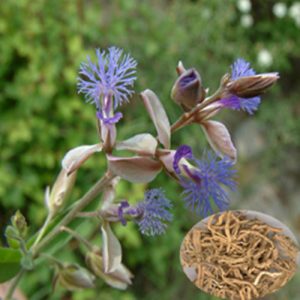
Polygala tenuifolia Wild extract
Anxiolytic and sedative–hypnotic activities of polygalasaponins from Polygala tenuifolia
In the present study, the anxiolytic and sedative–hypnotic activities of polygalasaponins extracted from Polygala tenuifolia Willdenow (Polygalaceae) were determined in mice using hole-board, elevated plus maze, open field, and sodium pentobarbital-induced hypnosis tests. Moreover, the acute toxicity of polygalasaponins was also estimated in mice.
Sixty minutes after p.o. administration of polygalasaponins (40, 80, 160 mg/kg) in mice, the central crossing counts and percentage of central/total ambulation significantly increased and the number of rearings and defecations was evidently inhibited in the open field test. Polygalasaponins also increased the head-dips of mice in the hole-board test and the time spent by mice in the open arms of the X-maze, prolonged sleep duration and shortened sleep latency in the test of synergetic effect on sodium pentobarbital (45 and 25 mg/kg, respectively).
Acute toxic study showed the oral median lethal dose (LD50) of polygalasaponins was 3.95 g/kg and 0% lethal dose 2.6 g/kg. These results suggest that polygalasaponin possesses evident anxiolytic and sedative–hypnotic activities and has a relatively safe dose range, which supports the use of Polygala tenuifolia root as an anxiolytic and sedative–hypnotic drug in folk medicine.
The aim of this study is to investigate the sleep-promoting effect of a water extract of the Polygonatum sibiricum rhizome (PSE) in rodent models. PSE contained oleamide (0.10 mg/g extract) and glyceryl monolinoleate (0.17 mg/g extract), which are recognized as sleep-promoting substances. In pentobarbital-induced sleep model at hypnotic level, PSE (160 mg/kg) administration significantly decreased sleep latency time by 29% (2.7 min) and increased sleep duration time by 70% (68.4 min) compared with the normal control (3.8 min and 40.7 min, respectively). In the electroencephalography (EEG) analysis of rats, PSE-mediated sleep promotion accompanied the change of sleep architecture including increase of non-rapid eye movement (NREM) and decrease of REM.
This sleep promoting effect was more obvious in caffeine-induced awakening model; total sleep time was increased by 40% along with increased NREM by PSE treatment at 160 mg/kg. In addition, PSE significantly increased the protein and mRNA levels of GABAA-R2 and 5-HT1A receptor, the major sleep-related neurotransmitter receptors. Furthermore, glyceryl monolinoleate and oleamide effectively bound to GABAA receptor in a competitive binding assay.
These results indicate that PSE-mediated sleep-promoting effect is associated with the extension of NREM and upregulation of GABAA-R2 and 5-HT1A, and is mediated by binding to the GABAA receptor in vertebrate models.
The aim of this study was to identify sleep-promoting substance from Polygonatum sibiricum rhizome extract (PSE) with the regulation of sleep architecture. PSE showed a decrease in sleep latency time and an increase in the sleeping time. In the electroencephalography analysis of rats, PSE (150 mg/kg) showed an increase of non-rapid eye movement by 38% and a decrease of rapid eye movement by 31% compared to the control.
This sleep-promoting activity was found to be involved in the GABAA-BDZ receptor. The chemical structure of the pure compound was determined by the 1H and 13C nuclear magnetic resonance spectroscopy and gas chromatography mass spectrometry analysis; active compound was glyceryl-1-monolinoleate. The commercial standard glyceryl-1-monolinoleate showed a similar inhibitory concentration on [3H]-flumazenil binding to GABAA-BDZ receptors with final active fraction of PSE. The results indicate that glyceryl-1-monolinoleate is a major active compound responsible for the PSE-derived sleep promotion.
Efficacy of Polygonatum sibiricum on Mild Insomnia: A Randomized Placebo-Controlled Trial
Polygonatum sibiricum (PS) rhizome, which contains glyceryl-1-monolinoleate as its primary active component, has been shown to improve insomnia in animal models. Based on these findings, we aimed to investigate the safety and efficacy of PS rhizome extract in improving sleep quality in individuals with mild insomnia. Eighty individuals with mild insomnia were enrolled in a four-week, randomized, double-blind, placebo-controlled trial of PS rhizome extract (500 mg/day, n = 40, PS group) or placebo (n = 40, placebo group). The primary outcome measure was change in total score on the Athens Insomnia Scale (AIS) to indicate sleep quality.
The secondary outcome measures included change in actigraphy data and perfusion levels in the brain regions within the default mode network (DMN), which is known to play a key role in insomnia. The PS group showed greater improvement in the total AIS score with a significant increase in total sleep time, relative to the placebo group.
In addition, significant group-by-visit interactions were observed in the perfusion level of the medial prefrontal cortex within the DMN. Findings of the current study provide first evidence that PS rhizome extract could be an effective natural ingredient for improving sleep in mild insomnia using a human model.
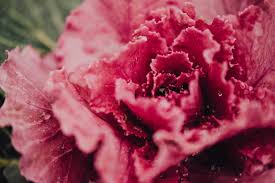
Red Cabbage (Brassica oleracea)
Hypnotic Effect of Red Cabbage (Brassica oleracea) on Sleep
Insomnia is defined as repeated difficulty in falling asleep, difficulty maintaining sleep, and/or experiencing low-quality sleep, which results in some form of daytime disturbance. Low sleeping leads to mental problem and fatigue. According to recent reports, 45% people suffer from sleeping disorder; this problem is higher in women than men.
There are some drugs such as benzodiazepines and antihistaminic agents that are used for inducing sleep. γ -Aminobutyric acid receptor A (GABAA) is an important target for sleep-inducing drugs. However, they are not suitable for long-time administration because of their tolerance-related issues and dependence. There is a need to find new hypnotic drugs with lower adverse effects.
Natural products have always been good sources for developing new treatments for the management of several diseases. Some of the herbs that are used in insomnia include Humulus lupulus, Ziziphus jujuba (sour date), Valeriana officinalis, Passiflora incarnata (passion flower), Eschscholzia californica (California poppy), Piper methysticum, and Lactuca sativa. The red cabbage (Brassica oleracea var. capitata f. rubra) belongs to Brassicaceae family (order: Brassicales). Red cabbage is a cheap source of anthocyanin pigment.
Red cabbage contains flavonoids, and recent studies have shown that flavonoids have good therapeutic effects. The pharmacological effects of red cabbage include reducing oxidative stress, decreasing blood glucose, possessing anticancer properties, and reducing blood cholesterol. In some traditional medicinal books, it is reported that red cabbage has sedative–hypnotic effect. There is no pharmacological report about the hypnotic effect of red cabbage.
Therefore, this study has been designed to evaluate the sleep-prolonging effect of red cabbage extract and its different fractions. Also, flumazenil was used to guess possible sleep mechanism.
Sedative and anxiolytic-like activities of the moss Rhodobryum ontariense
Hypnotic Effect of Rosa damascena
Rosa damascena (Rosaceae) has been found to act on central nervous system including the brain. Several studies confirm that Rosa damascena inhibits the reactivity of the hypothalamus and pituitary systems in rat and can suppress the reactivity of central nervous system. In traditional medicine the hypnotic effect of rose is also suggested. In the present study hypnotic effect of ethanolic, aqueous and chloroformic extracts of Rosa damascena was investigated in mice.
Hypnotic method was based on potentiation of pentobarbital induced sleeping time by extracts. Three doses of extracts (100, 500 and 1000 mg/kg) were injected intraperitoneally in comparison with diazepam (3 mg/kg) as the positive control and saline as the negative control. Thirty min after injection of extracts, pentobarbital (30 mg/kg) was injected and any increase in the sleeping time due to the extracts was recorded. Results showed that the ethanolic and aqueous extracts in doses of 500 and 1000 mg/kg significantly increased the pentobarbital induced sleeping time (P<0.001, compared to the negative control), which was comparable to diazepam.
Rosa damascena as holy ancient herb with novel applications
Rosa damascena as an ornamental plant is commonly known as “Gole Mohammadi” in Iran. Iranian people have been called this plant, the flower of Prophet “Mohammad”. R. damascena is traditionally used for treatment of abdominal and chest pains, strengthening the heart, menstrual bleeding, digestive problems and constipation.
This paper reviews the ethnopharmacology, phytochemistry and pharmaceutical investigations on R. damascena.
All relevant databases and local books on ethnopharmacology of R. damascena were probed without limitation up to 31st March 2015 and the results of these studies were collected and reviewed.
R. damascena has an important position in Iranian traditional medicine. It is economically a valuable plant with therapeutic applications in modern medicine. The antimicrobial, antioxidant, analgesic, anti-inflammatory, anti-diabetic and anti-depressant properties of R. damascena have been confirmed. Citronellol and geraniol as the main components of R. damascena essential oil are responsible for pharmacological activities.
Overall, R. damascena as holy ancient plant with modern pharmacological investigations should be more investigated as traditional uses in large preclinical and clinical studies.
CNS DEPRESSANT EFFECT OF THE CRUDE ETHANOLIC EXTRACT OF THE FLOWERING TOPS OF ROSA DAMASCENA
The ethanolic extract of the flowering tops of Rosa damascena (Rosaceae) was assessed for effect on the central nervous system (CNS) using a number of neuropharmacological experimental models in mice. The extract produced a dose-dependent reduction of the onset and duration of pentobarbitone-induced hypnosis, reduction of locomotor and exploratory activities in the open field, hole cross tests. At the same dose levels, the extract dose-dependently inhibited acetic acid-induced writhing in mice.
These results suggest that the extract possess CNS depressant activity.
(Mallotus philippinensis)
Insomnia is a sleep disorder which mainly perception or complaint of inadequate or poor-quality sleep due to various psychological and physical disorder. Sedatives are the drugs which calm the central nervous system (CNS) and have a relaxing effect. Sedatives at higher doses usually cause sleep; they can be defines as hypnotics. The basic difference between sedatives and hypnotics is the amount of the dose; calming effect achieved at low dose while sleep at a higher dose. Recent studies have shown that herbal drugs exert good sedative and hypnotic effect on the CNS [13,14].
Our experimental laboratory and research group have been engaged in the identification of various herbal plants for the anti-inflammatory, analgesic and hypnotic activity using anti-inflammatory, analgesic and hypnotic experimental animal models. This study evaluates the anti-inflammatory, analgesic and hypnotic potentiation of MPE against various animal experimental models.
These activities are important for any ulcer healing property including wounds as anti-inflammatory activity would help in decreasing wound inflammation, while analgesic and hypnotic activity would reduce the reaction to pain and cause euphoria.
Saffron stigma (Crocus sativus L.) is used for insomnia and anxiety in traditional medicine. In this study, the anxiolytic and hypnotic effects of saffron aqueous extract and its constituents, crocin and safranal, were studied in mice. Agents were administered intraperitoneally in mice before the experiments for the evaluation of hypnotic activity (induced by sodium pentobarbital, 30 mg/kg, i.p.), anxiolytic activity (elevated plus maze test), locomotor activity (open field test) and motor coordination (Rotarod test). The aqueous extract reduced the locomotor activity dose dependently.
At low doses, saffron showed a significant increase in the time on the open arms of the maze. When using the Rotarod method, the aqueous extract showed considerable effect on motor coordination of the mice. In the hypnotic test, only a dose of 0.56 g/kg of saffron increased the total sleep. Crocin showed no anxiolytic, hypnotic or myorelaxation effects. Safranal, in higher doses, 0.15 and 0.35 mL/kg, showed anxiolytic effects.
Safranal increased the total sleep time dose dependently. This constituent at lower doses (0.05 and 0.15 mL/kg) decreased some locomotion activity parameters. Safranal demonstrated no effects on motor coordination. The results showed that saffron aqueous extract and safranal have anxiolytic and hypnotic effects.
Salvia miltiorrhiza
Semen Ziziphi spinosae (Suanzaoren in China) and Radix et Rhizoma Salviae miltiorrhizae (Danshen in China) are conventional herbal drugs in traditional Chinese medicine and have been used widely for the treatment of insomnia. In the present study, the sedative–hypnotic activity of the active fractions extracted from Suanzaoren and Danshen were studied using the method of pentobarbital-induced sleep in the mouse model. Qualitative analysis of the standardized extracts was carried out by HPLC-DAD.
The results showed that the water extract of Suanzaoren (SWE) (400 and 800 mg/kg body wt.) and the ether extract of Danshen (DTT) (300 and 600 mg/kg body wt.) can shorten sleep latency significantly, increase sleeping time and prolong movement convalescence time induced by sodium pentobarbital (55 mg/kg body wt.) administration in mice. Furthermore, the combination of SWE and DTT showed significant synergistic effect (p<0.05) in decreasing sleep latency and increasing sleeping time, but not in prolonging the movement convalescence time, which might be helpful for energy recovery in the treatment of insomnia.
The results suggest that SWE, DTT, and the combination of SWE and DTT possess significant sedative–hypnotic activity, which supports the popular use of Suanzaoren and Danshen for treatment of insomnia and provide the basis for new drug discovery. Furthermore, the results demonstrate that the combination of SWE and DTT may be preferable for the treatment of insomnia.
Salvia reuterana
Hypnotic Effect of Salvia reuterana Boiss for Treatment of Insomnia
Background: Insomnia, which is difficulty in initiating and maintaining sleep, is a very common experience for many people. Considering the increasing interest in medicinal plants in the past decade, many plants such as Coriandrum sativum, Salvia leriifolia, Salvia reuterana and Stachys lavanduli folia have been used in Iranian traditional medicine to abate insomnia. Objective: The present study was designed to investigate hypnotic effect of Salvia reuterana on male mice.
Methods: Ethanolic extract of S. reuterana was prepared. Five groups of 6 animals each were pretreated with vehicle, Salvia extract (50, 100 and 250 mg/kg; i.p.) or diazepam (0.5mg/kg; i.p.) 30 minutes before ketamine injection (100 mg/kg, i.p.).
Results: The latency and total sleeping times were recorded to determine the hypnotic effect of the extract. The results indicated that ethanolic extract of S. reuterana, reduced the latency time and induced the total sleeping time in a dose dependent manner, compared to saline group.
Conclusion: The present study suggests that S. reuterana produces hypnotic effect which can be evaluated clinically.
Schisandra chinensis (Turcz.) Baill., a traditional Chinese medicine, has been clinically used for the treatment of insomnia for centuries. The insomnia mechanism and the possible active ingredients of S . chinensis remain largely unknown. The objective of this study was to develop a method to detect its components which could pass through the blood brain barrier (BBB) by determining the brain microdialysate and brain tissue homogenate samples and then obtain the pharmacokinetic profile in brain for comprehensive understanding of its hypnotic clinical efficacy.
Therefore, an efficient, sensitive and selective ultra fast liquid chromatography/tandem mass spectrometry method for the simultaneous determination of six sedative and hypnotic lignans (schisandrin, schisandrol B, schisantherin A, deoxyshisandrin, γ‐schisandrin and gomisin N) of Schisandra chinensis (Turcz.) Baill. in rat brain tissue homogenate and brain microdialysates has been developed and validated. The analysis was performed on a Shim‐pack XR‐ODS column (75 mm × 3.0 mm, 2.2 µm) using gradient elution with the mobile phase consisting of acetonitrile and 0.1% formic acid water.
The method was validated in brain homogenate and microdialysate samples, which all showed good linearity over a wide concentration range (r2 > 0.99), and the obtained lower limit of quantification was 0.1 ng · ml−1 for the analytes in brain microdialysate samples. The intra‐ and inter‐day assay variability was less than 15% for all analytes.
The study proved the six lignans, as sedative and hypnotic ingredients, could pass through the BBB with brain targeting, distributed mainly in the hypothalamus and possessed complete pharmacokinetics process in brain.
The results also indicated that significant difference in pharmacokinetic parameters of the analytes was observed between two groups, while absorptions of these analytes in insomniac group were significantly better than those in normal group.
Scoparia dulcis Linn. (SD) is a perennial herb that has been well studied for its antioxidant, anti-inflammatory, antidiabetic, and hepatoprotective effects. However, scientific information on SD regarding the neuropharmacological effect is limited. This study evaluated the sedative and hypnotic effect of the ethanolic extract of whole plants of Scoparia dulcis (EESD). For this purpose, the whole plants of S. dulcis were extracted with ethanol following maceration process and tested for the presence of phytochemical constituents. The sedative and hypnotic activity were then investigated using hole cross, open field, hole-board, rota-rod, and thiopental sodium-induced sleeping time determination tests in mice at the doses of 50, 100, and 200 mg/kg of EESD. Diazepam at the dose of 1 mg/kg was used as a reference drug in all the experiments.
We found that EESD produced a significant dose-dependent inhibition of locomotor activity of mice both in hole cross and open field tests. Besides, it also decreased rota-rod performances and the number of head dips in hole-board test. Furthermore, EESD significantly decreased the induction time to sleep and prolonged the duration of sleeping, induced by thiopental sodium. Taken together, our study suggests that EESD may possess sedative principles with potent hypnotic properties.
Many medicinal plants have been used for treatment of insomnia in Asia. However, scientific evidence and precise mechanism for their sedative–hypnotic activity have not been fully investigated. Thus, we investigated the binding activity of the oriental plant extracts (mainly from Korea and Japan) to the well-known molecular targets for sleep regulation, GABAA and 5-HT2C receptors. Following the binding assay, sedative–hypnotic effects of the extracts with high affinity were examined in an animal model of sleep.
Aqueous and ethanol extracts of 15 medicinal plants were tested for binding at the benzodiazepine site of GABAA receptor and 5-HT site of 5-HT2C receptor. The sedative–hypnotic effects of selected extracts were evaluated by measuring the sleep latency and sleep duration during pentobarbital-induced sleep in mice after oral administration of extracts.
In the GABAA assay, the ethanol extracts of licorice and danshen displayed concentration-dependent, high affinity binding, whereas in the 5-HT2C assay, the ethanol extracts of ginseng and silk tree showed high affinity. Among these extracts we tested previously uncharacterized licorice and silk tree for hypnotic effects. We found the ethanol extracts of licorice and silk tree significantly decreased sleep latency and increased sleep duration in pentobarbital-induced sleep.
We demonstrate for the first time that licorice and silk tree have the sedative–hypnotic activity possibly by modulating GABAA and 5-HT2C receptors. We propose that licorice and silk tree might be effective candidates for treatment of insomnia.
Uncaria rhynchophylla
Rhynchophylline Enhances Rapid Eye Movement Sleep
Insomnia can be defined as the inability to initiate or maintain sleep. It is also one of the most common health problems in modern society. Furthermore, chronic insomnia disturbs daily sleep and causes diverse problems in daily living such as chronic fatigue, decreased work efficiency, lack of alertness, and poor cognitive abilities. Over the last decade, scientists have shown increased interest in herbal medicines, which contain phytochemicals that promote health. Many herbs such as St, John’s wort, kava kava, valerian, and passion flower have been introduced in European countries.
Herbs as sleep aids are becoming more popular as alternative medicines. γ-Aminobutyric acid (GABA), the main inhibitory neurotransmitter of the central nervous system (CNS), is the most prevalent target for treating insomnia. It is well established that activation of GABAA-ergic neurons plays an important role in sleep. Glutamic acid decarboxylase (GAD65/67), an enzyme responsible for the synthesis of GABA also plays a crucial role in sleep. On the other hand, GABA is released to the synapse, the extracellular space between the neurons. The GABAA receptors complex consists of a Cl− ionophore principally coupled to GABA, barbiturate, benzodiazepine, steroid, and picrotoxin binding sites. Basic subunits are composed to α (1~6), β (1~3) and γ (1~3).
These binding sites trigger the chloride channel’s opening with resulting membrane hyperpolarization. GABAA-ergic drugs have induced sedative–hypnotic effects in animals and humans.6 Rhynchophylline (RP, Fig. 1) is a major tetracyclic oxindole alkaloid from the Uncaira species, which has been long used medicinally.
Recently, it has been reported that RP attenuates ischemia-induced neuronal damage in the hippocampus by the noncompetitive antagonistic effect of N-methly-D-aspartate (NMDA). Moreover, RP reduced kainic acid-induced epileptic seizure. The Uncaira species has been traditionally used to treat neurological disorders such as seizures, pain, and anxiety in the oriental countries. We are interested in whether RP enhances pentobarbital-induced sleeping behaviors and modulates sleep architecture because it has shown neuro protective and inhibitory pharmacological effects on the CNS. Furthermore, the possible mechanisms of RP as a candidate for insomnia treatment are suggested from these experiments.
Uncaria rhynchophylla is a medicinal herb which has sedative and anticonvulsive effects and has been applied in the treatment of epilepsy in Oriental medicine. In this study, the effect of alkaloid fraction of U. rhynchophylla against N-methyl-d-aspartate (NMDA)-induced neuronal cell death was investigated.
Pretreatment with an alkaloid fraction of U. rhynchophylla for 1 h decreased the degree of neuronal damage induced by NMDA exposure in cultured hippocampal slices and also inhibited NMDA-induced enhanced expressions of apoptosis-related genes such as c-jun, p53, and bax. In the present study, the alkaloid fraction of U. rhynchophylla was shown to have a protective property against NMDA-induced cytotoxicity by suppressing the NMDA-induced apoptosis in rat hippocampal slices.
Uncaria rhynchophylla is a medicinal herb used for convulsive disorders in Oriental medicine. In this study, the effect of the methanol extract of Uncaria rhynchophylla against N-methyl-D-aspartate (NMDA)-induced excitotoxicity was investigated. Pretreatment with the extract of Uncaria rhynchopylla reduced the degree of neuronal damage induced by NMDA exposure in cultured hippocampal slices.
In the patch clamp study, Uncaria rhynchophylla significantly inhibited NMDA receptor-activated ion current in acutely dissociated hippocampal CA1 neurons. These results indicate that Uncaria rhynchophylla offers protection against NMDA-induced neuronal injury and inhibitory action on NMDA receptor-mediated ion current may be a mechanism behind the neuroprotective effect of Uncaria rhynchophylla.
The effect of an aqueous extract of valerian (Valeriana officinalis L.) root on subjectively rated sleep measures was studied on 128 people. Each person received 9 samples to test (3 containing placebo, 3 containing 400 mg valerian extract and 3 containing a proprietary over-the-counter valerian preparation). The samples, identified only by a code number, and presented in random order, were taken on non-consecutive nights. Valerian produced a significant decrease in subjectively evaluated sleep latency scores and a significant improvement in sleep quality: the latter was most notable among people who considered themselves poor or irregular sleepers, smokers, and people who thought they normally had long sleep latencies.
Night awakenings, dream recall and somnolence the next morning were relatively unaffected by valerian. With the proprietary valerian-containing preparation, the only change was a significant increase in reports of feeling more sleepy than normal the next morning. Thus the questionnaire, simple to use and non-invasive, provides a sensitive means for detecting the effects of mild sedatives on different aspects of sleep in man. It also allows identification within the test population of the subgroups most affected.
Ziziphus jujube Semen
(seeds of Ziziphus jujuba Mill. var. spinosa)
Semen Ziziphus jujube (SZJ), the seeds of Ziziphus jujuba Mill. var. spinosa, is a kind of traditional Chinese medicine used for its action on insomnia. In order to analyze the effective component, we investigated and compared the sedative and hypnotic effects of three kinds of compounds, flavonoids, saponins, and polysaccharides.
Flavonoids, saponins, and polysaccharides were extracted from SZJ and orally administered to mice separately at 17 g kg−1 per day for certain days before animal tests. Spontaneous motility and coordinated movement tests were used to observe the effects of the three kinds of compounds on the mouse behavior, and sodium barbital-induced sleeping time of mouse were tested to analyze the effects of the three kinds of compounds on the sleep of mouse.
Results show that flavonoids and saponins caused a significant reduction of walking time and coordinated movement ability of mouse, significantly prolonged its sleeping time at 40 mg kg−1, ip, subthreshold dose and increased the sleeping number of animals at 50 mg kg−1, ip, super threshold dose induced by coeliac injection of sodium barbital. Polysaccharides did not show any significance in all animal tests. Comparative analysis showed that saponins had a more effective sedative and hypnotic function than that of flavonoids, polysaccharides did not show a sedative and hypnotic effect.
| Size | 100g |
|---|

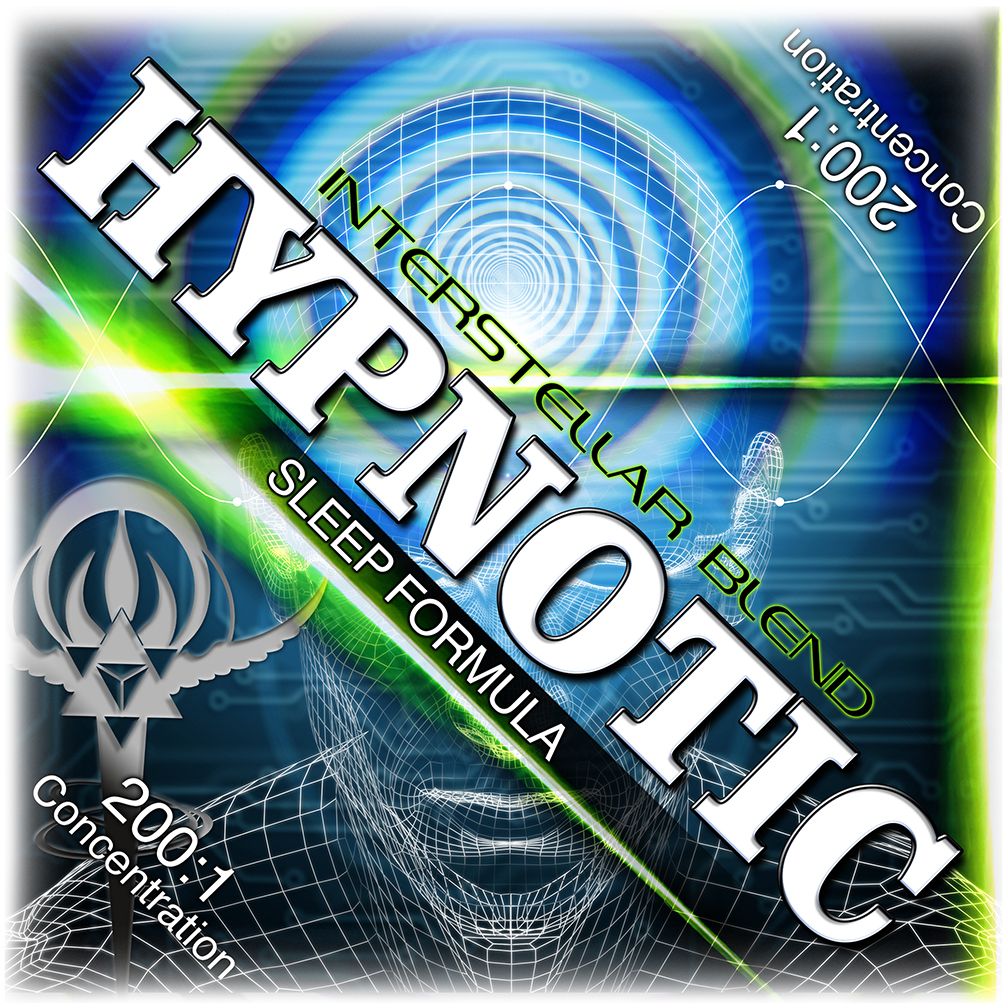

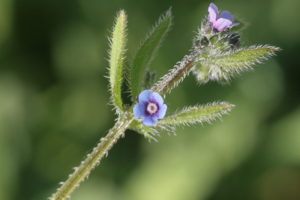
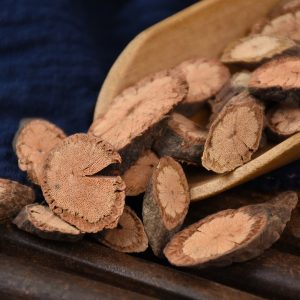
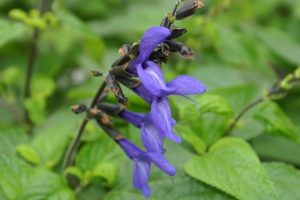

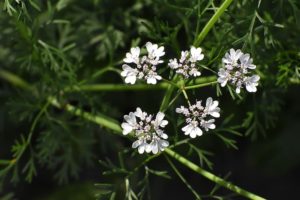
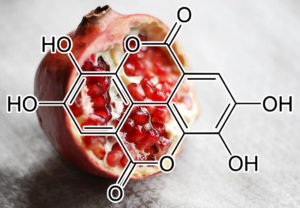
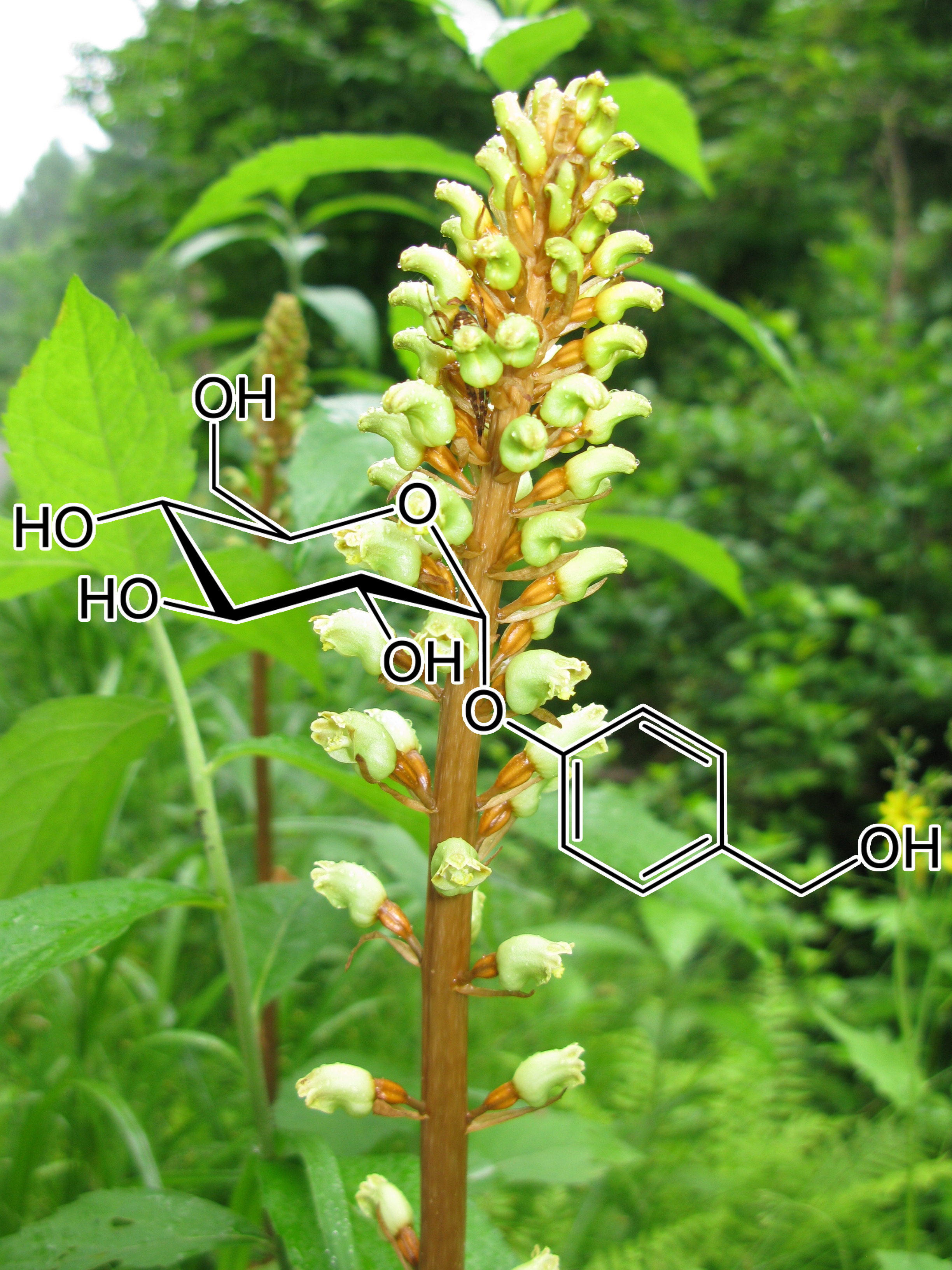
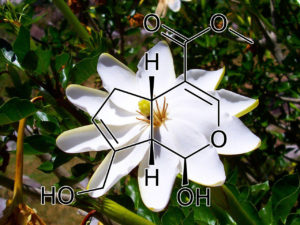
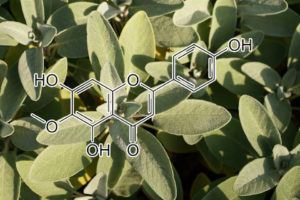

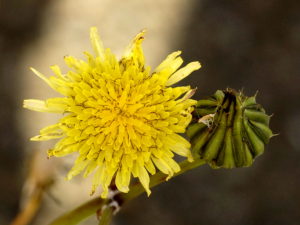
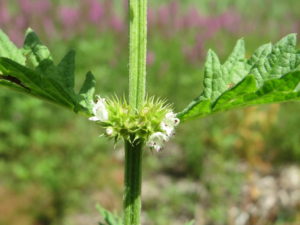

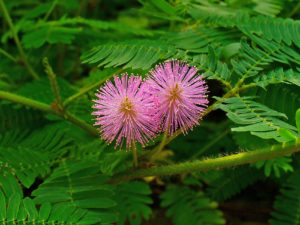
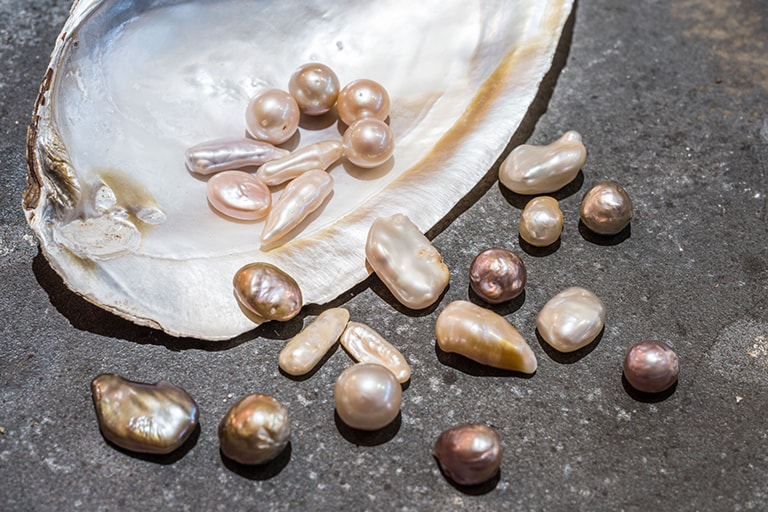
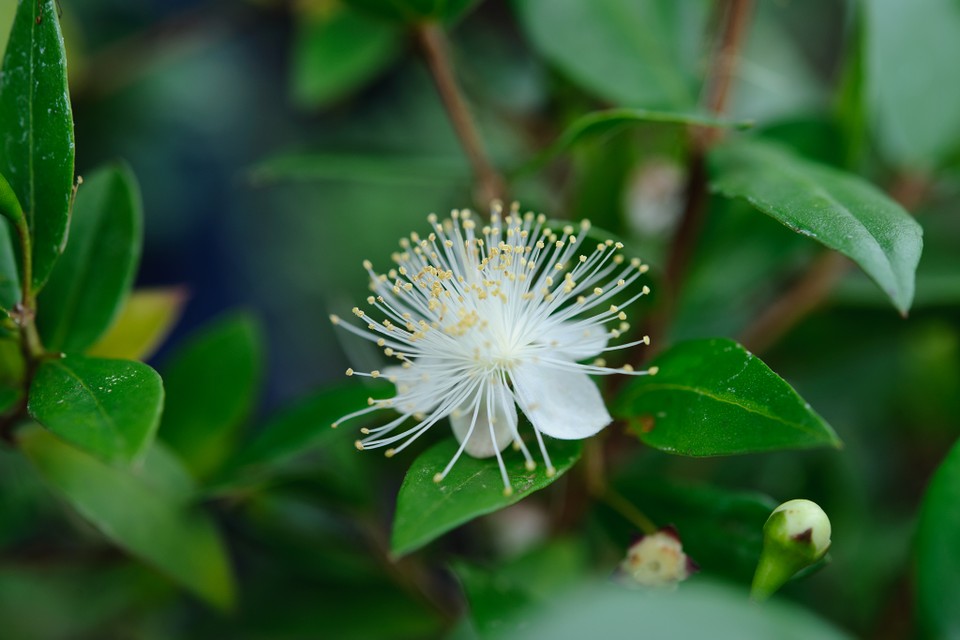
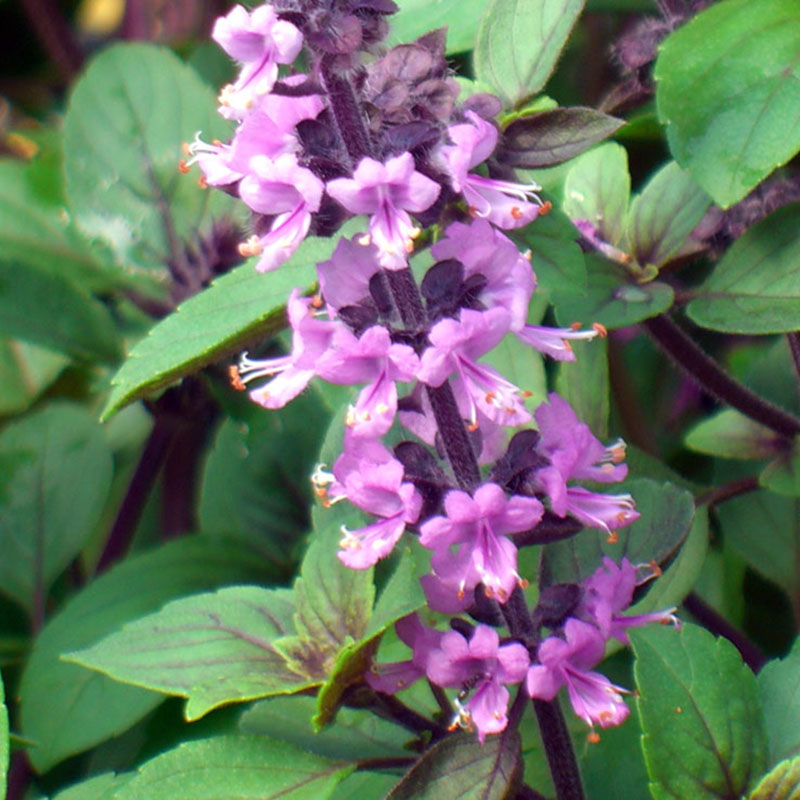
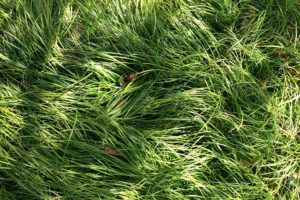
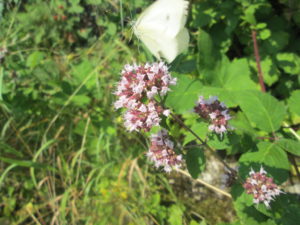


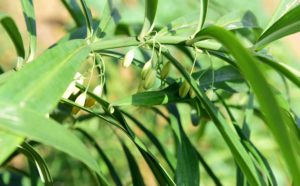
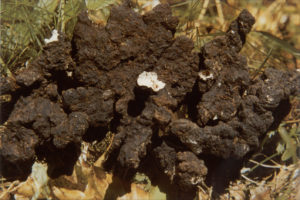
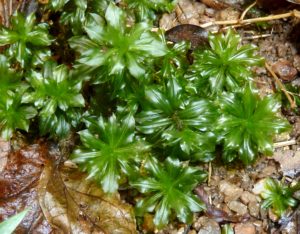
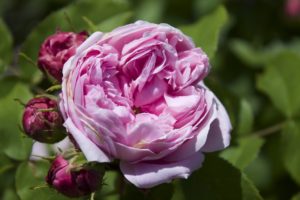
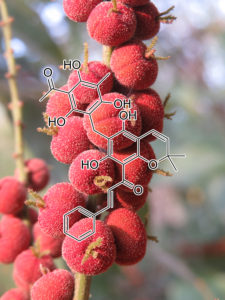
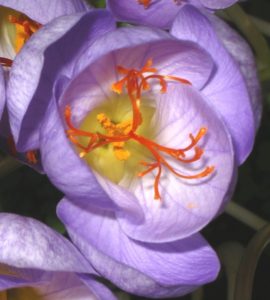

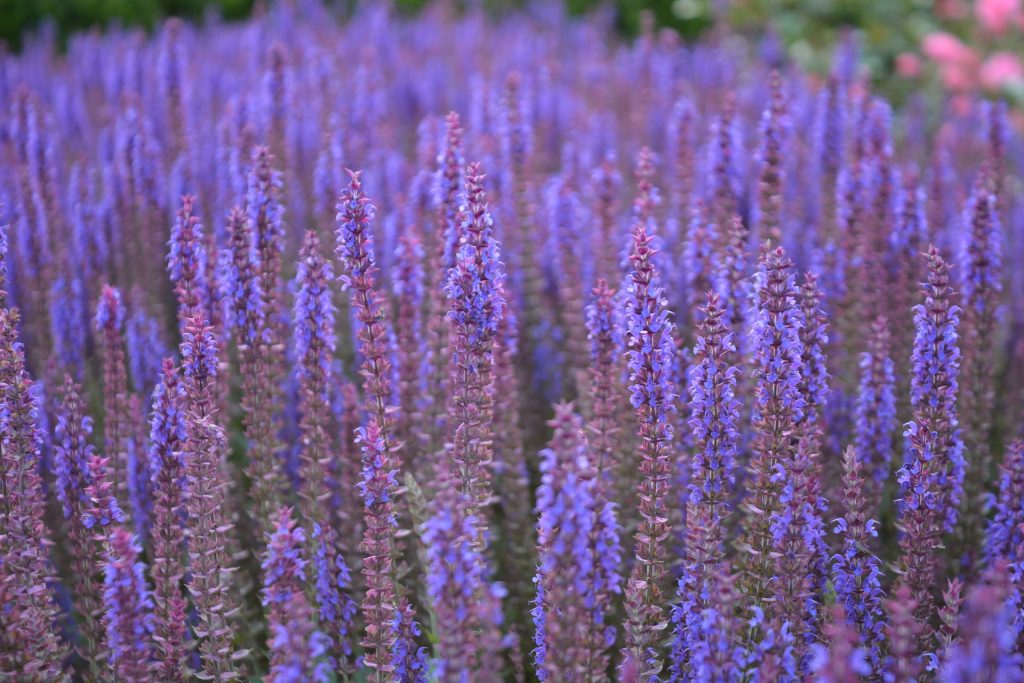
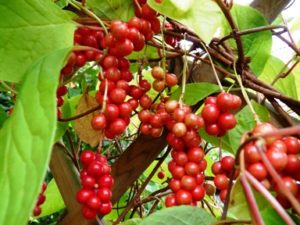

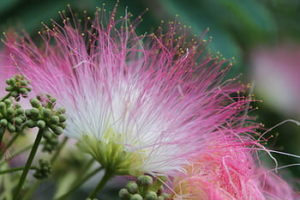
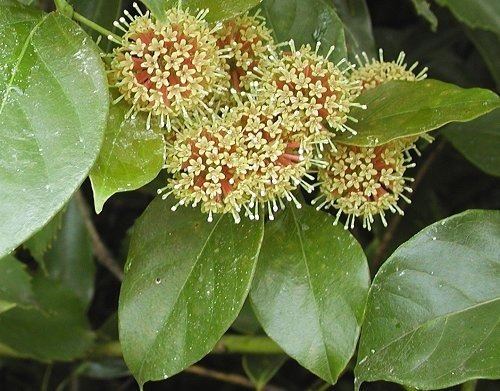
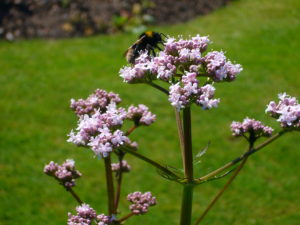
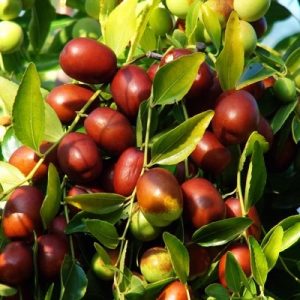

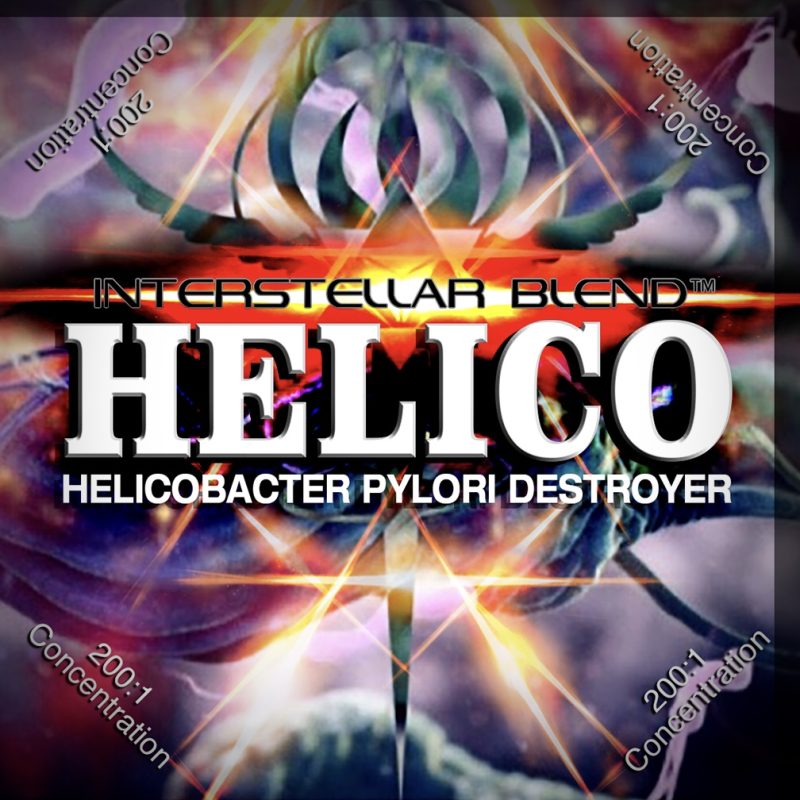
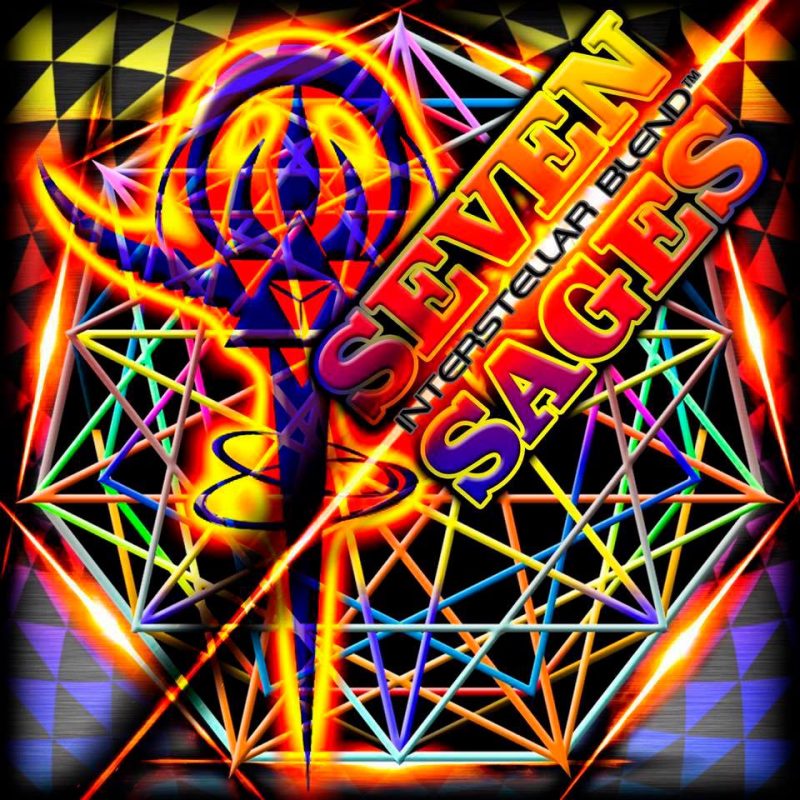


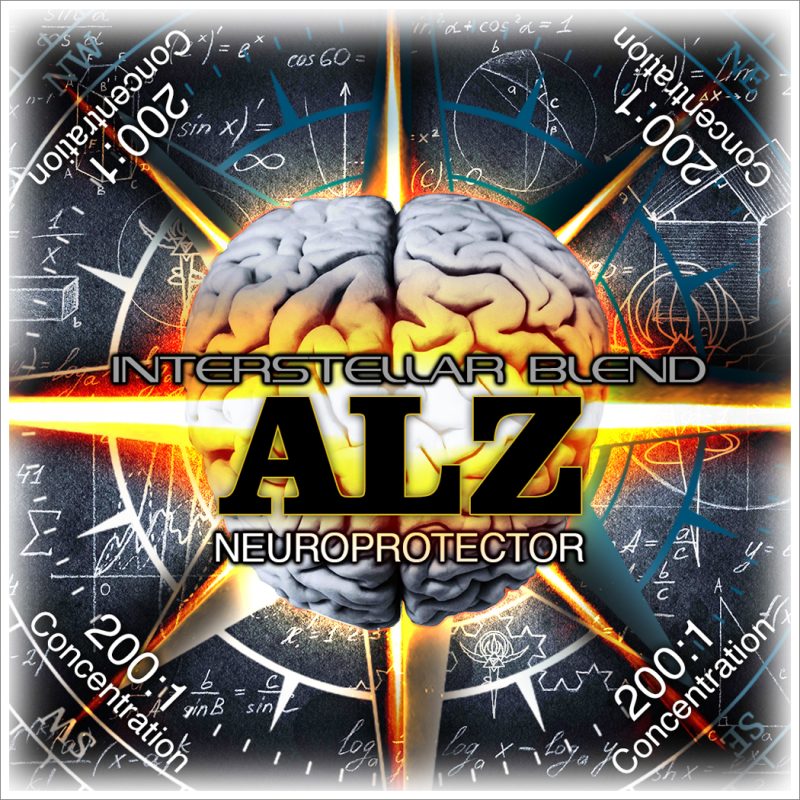
Rich Ryan –
I’ve had insomnia since I was a teenager. High sugar high carb teen diet equals messed up brain chemistry and no sleep! Add in a career as a computer programmer and systems engineer, working most days until dawn, and you got a night owl.
After decades of insomnia and trying all kinds of supplements, I’ve finally found something that works!
1/2 tsp of Hypnotic at night in a little hot water and I feel very drowsy and fall asleep more easily within 30 min.
I also sleep the night through most of the time now.
Hypnotic is the Magic Sleep Powder! Fairy Dust!
Paul Benson (verified owner) –
All right, let me talk about Hypnotic for a moment—but if you don’t want to read the full review—read this: I can finally sleep!
Now, I’ve had pretty bad insomnia off and on since I was a late teen (fourteen–fifteen years ago). But for the past probably year and a half, falling asleep quickly seemed like a sweet fantasy. And for the last several months, when I go to lie down, relaxed and tired, I’ll be lying down, focusing on relaxing, focusing on my breathing—and my body will start shaking. My mind will be so relaxed, but my body is having a panic attack. (It’s a weird feeling.) It’s similar to when you just can’t get enough oxygen, and your body starts panicking, but I know I’m getting enough oxygen because of the breathwork. So then, I get up, and my body’s like “Ahh, that’s better. Now get to work, or go to sleep now, I don’t care.” Maybe I’ll use the bathroom or get a drink, feel like I can zonk out for twelve hours, lie down and—the shakes resume. It sucks.
First time trying hypnotic, the panic was literally gone. I slept great.
The next night I tried hypnotic, I didn’t fall asleep until around three in the morning. But—the panic was gone and even though I didn’t get as much sleep, it was restful sleep.
Next night, slept great.
And for the first probably week and a half, it was great sleep every other night. But the off nights—there was no panic, which has been such a relief. (I probably should have gone to the doctor about the panic, and I recognize that, but I’ve been so over doctors from other health issues, that I just didn’t. Plus, I’ve done the sleep studies in the past, and no help there.) And each progressive off night took less and less time for me to fall asleep.
But now, every night is a good sleep night.
So, you might be wondering, you’ve said “on and off,” so how do you know this isn’t just a regular off cycle where you’re sleeping normally anyway. And that’s a fair question. Here’s my answer—first off, the panic that was only getting worse over the last few months is gone. Second off, and this was a big test, was watching shows at night with my wife. Now, ever since I was a kid, watching TV or movies at night would wake me up, and I’d need at least an hour or two of wind-down time to fall asleep. My wife works long hours, and when she gets home, exhausted, one of the things she loves to do is snuggle and watch one of our favorite comedy shows together. We’ll watch a couple of episodes, and then she’ll be out. I’ll feel exhausted as well, but my brain will be like “Oh! Well, time to solve the Student Loan crisis!” But at the same time, if I’m not going to be able to sleep anyway, then why not just watch the show? Probably not the best logic or attitude, I get it, but if you’ve had long periods of insomnia, you know what I’m talking about (plus, my wife’s amazing, so I’ll take any chance to snuggle I can get!).
So, with that in mind, now when I watch something with my wife, I’ll feel the herbs starting to kick in, and so I’ll go to bed, and then within ten–fifteen minutes I’m out. It’s incredible. It would have taken me hours of lying there, and instead, it’s minutes. I love it!
Here’s one more important difference—when I would wake up in the middle of the night, even in the good sleep cycles, it would more often than not take me at least an hour to fall back asleep. Now if I need to use the bathroom during the night, it doesn’t matter—I fall back asleep within minutes (sometimes less!).
A couple of things to keep in mind when taking this: if you’ve had bad insomnia, don’t write it off if you’ve got a “loading phase.” Many medicines do, and every body is different. And whether or not it’s one day on one day off like mine, or a slower buildup, give it a fair try. And another thing to keep in mind—if you’ve racked up a serious sleep debt, you’re probably going to need a few weeks of longer sleep periods. So if you need ten hours of sleep but you’re only getting seven, don’t be like, well I’m feeling tired in the morning, so obviously this is making me groggy; when really, what it is, is you just need to give yourself a chance to pay off that sleep debt. And the last thing to keep in mind—you may need to adjust the dosage. Gavin is a fantastic resource as well; you can tell he actually cares about his customers because even though he’s incredibly busy, he’ll always answer your questions.
Overall, hypnotic is a fantastic blend. Thank you, Gavin—I can actually sleep well!
Monika Banach –
Holy Sh*t…. this Hypnotic Thing is like crack cocaine for sleep!!!! I’m typically a decent sleeper, but after taking Hypnotic it’s another level deep, restorative sleep!!!! I finally took it on my 4th day of my 5 day challenge per Gavin’s recommendation and when I woke up I felt like a million bucks! Longer fasts can often affect your sleep especially when you start getting pretty lean. This thing is awesome!!! I’m ordering more with my winning money 🙌🏻
Monika Banach
Sarah H –
I purchased the Special pack for various reasons however sleep was never an issue for me or so I thought…. As a mother of 3 I was always tired and wanted to keep sleeping. I started taking the Hypnotic Sleep Formula and my Sleep now is INSANE !! I go to sleep in a matter of minutes and I feel so refreshed when I wake up. Our entire family takes it now. My 20 daughter had sleep issues and could never fall asleep or stay asleep for very long. With this blend she is sleeping longer and goes to sleep very quickly. Thank you Gavin for creating all these Blends Im looking forward to trying them all.
Vishal –
I strongly believe good quality sleep is one of the most crucial elements to overall good health & I have always had intermittent problems with sleep. Due to the nature of my work it’s hard to switch off at times and found that no matter how physically tired I was at night, often I could not “switch off” my brain. I have tried all the natural herbal remedies but they all only worked for a very limited time and am against taking any pharmaceutical drugs long term. I tried CBD and other plant oil derivatives but found I built an immunity over time or the next day felt very groggy and lethargic. I have been taking hypnotic for a few weeks now and it is truly amazing. Within around half an hour it kicks in and I get an AMAZING night’s sleep everyday, the next day after a coffee feel great. I have been looking for something like this for some time and am grateful to Gavin for sharing his knowledge. Whilst it does seem expensive, the amount needed is very small therefore it really lasts. I would highly recommend this to anyone with sleep issues, it’s the best solution I have come across and I have been looking for some time!
Radha B –
I have never been a good sleeper. And now that I am in my 70’s I feel tired most of the time. It’s an awful way to go through life. I took a Sleep Apnea test and I was surprised to learn that Apnea wasn’t what I suffered from. I became very distraught because I did not want to take medication to improve my sleep and I did not know what else could help me as I’ve tried numerous natural supplements to attempt to help my situation. My son told me about Interstellar and their new product Hypnotic. As he said that Interstellar’s founder is brilliant and makes no-compromise products, I was willing to give it a try.
After experiencing a night of sleep on 1/4 teaspoon dosage, I am absolutely amazed!!!
This product works wonders!!!! Like nothing else I’ve ever experienced! Even when I wake up during the night I can fall back asleep immediately and am so surprised when I look at the clock to see that several hours have passed and indeed I have been in a deep restful sleep! I wake up more refreshed and not groggy with a hung over feeling that other natural supplements or medications have made me feel.
It’s been nearly a week of using Hypnotic and the experience keeps getting even better ! Hands down, by far the best sleep supplement I’ve ever experienced and I have tried many before. You’ve got a goldmine here as MANY people will benefit from getting the unparalleled restorative high quality rest that Hypnotic provides. Thank you Interstellar for making such a powerful difference in the quality in my life.
Shiva B –
The game changer we’ve been waiting for…Hypnotic provides an unparalleled premium restorative sleep experience!
I grew up being an excellent sleeper but the older I got I experienced less and less quality sleep. Now in my 40’s, my sleep quality is highly erratic and has been an incredible source of frustration to attempt to get it handled and improved.
I’ve tried MANY natural sleep aid supplements, some have even been very good and formulated by excellent medical professionals. I’ve even tried the recently hyped CBD products currently all the rage.
NOTHING can begin to compare to the deep, restorative and healing sleep I have been receiving in the past week taking a 1/4 teaspoon dosage of Hypnotic.
This product is truly a cut above. I had VERY high expectations going into first trying the new product as I have been a fan of Interstellar for years. The founder is a no-comprise high integrity individual and Interstellar’s products and customer service are a direct reflection of his standards.
Having said that, my experience after only a week on Hypnotic has blown away my already very high expectations.
Simply put, this is the best I’ve ever slept!!! It’s one thing to have one great night of sleep. But a week?!!! I’ve never ever had a sleep aid product that delivered this consistently. Absolutely phenomenal! Not only has this product changed my life, but I’ve shared it with my mother who has significant challenges with getting quality sleep and she is now an even BIGGER fan of Hypnotic than I am! Hypnotic IS the game changer we have been waiting for!
Thank you Gavin!!!!
Ron Naim –
This shit changed my life my sleeping has never been better as soon as I first started taking it I saw the changes I got super sleepy first night and the next morning I woke up super energized the thing about it is that even if you wake up to pee 1 hour before your clock you cant go back to sleep you just cant your mind is awake and you want to devour the day I honestly recommend it to everyone not just people with sleeping issues best shit ever deep sleep super mornings!
scotty schmadebeck –
Hypnotic is the KEY to an amazing nights sleep! I have always had trouble sleeping through the night and always woke up feeling groggy.
That all changed once i started taking Hypnotic. I notice I begin to fall asleep much quicker and have no problems sleeping all the way through the night. I feel refreshed and ready for the day even if I dont get a full 8 hours in.
I’ve tried plenty of other sleep remedies in the past such as melatonin and had little success. If you have any trouble sleeping Hypnotic is the answer!
Decock (verified owner) –
Dear I want to thank you for these blends. I have had depression for years, anxiety disorders and I did not know what to do anymore. I took all kinds of medications from the doctor which made me worse. Since I have taken these blends I feel reborn!!! I cannot thank the maker of this enough, thank you!!!!!
MIKE D (verified owner) –
I work 12-16 hours a day 6/days week. You would think that I would sleep like a baby with that schedule? Over that past 7 years living with that schedule. Yet, over that time period, my quality and quantity of sleep has suffered immensely, having a dramatic effect on my life (in addition to the BS COVID lockdowns in my state). I have tried literally EVERYTHING, from melatonin, natural sleep pills and remedies, unisom. Tryptophan and the list goes on…nothing has worked…EVER! Therefore, I was hesitant seeing the price of Hypnotic, but reading the reviews gave me some hope. And please know that I really stumbled upon Interstellar brands reading a post and I really don’t know why I clicked on the link, but heaven knows…I am so glad I did! I went out on a limb and purchased Hypnotic with and addition to the monthly sampler pack. I cannot tell you what a difference this has made in the quality of my sleep and the impact it (and the sampler pack) has had on the quality of my life the last two months. It is literally transforming my entire life from the stress I endure daily. My personal relationships, which has suffered immensely, are transformed to the point where many people have noticed and actually proactively asked me (to my surprise) what have I done, because they see a change in my attitude and demeanor…and my happiness! I sleep about 6 hours a night, but awake with no hangover from the Hypnotic (like I had with the other supplements) and am ready and excited about my life again. Please, please…for your own quality of life…if you have sleep or stress issues. You MUST give this a try. I know each person has their own unique biologics, but my experience really means that I will be a lifelong client.
Alexa Scott –
Hypnotic works!!
I have been taking an array of blends for a couple of months now. Not a single one has disappointed me, but for now i am focusing on Hypnotic as it is one blend I can easily separate from the rest because my sleep has really changed for the better!! I have never had trouble falling asleep but staying asleep has been a pain. I normally would wake feeling groggy and unrested after a very unsettled night of light sleep. Every little thing woke me up previously.
Since taking Hypnotic I have the most vivid and brilliant dreams and what’s best is I am able to influence/ control them! I wake feeling like I have watched a bizarre but very entertaining movie. It really is like HD dreams. My partner is always amused when I tell him what I have dreamt the previous night. In addition to this, I find that if I wake up to go to the toilet or one of my kids wakes me, I can go back to sleep so easily and if I do so thinking about my dream I find I pick up where I left off!
The best part for me though is that the amount of deep restful sleep i have has now doubled according to my sleep tracker. The way I feel I have no doubt this is true.
I take my hypnotic in a small amount of chamomile tea usually. Occasionally in hot water and sometimes I add Trinity for some deeper relaxation.
Melissa Melendez –
Hypnotic where have you been my entire life?!
I’m new to the Interstellar blends so am starting slow. Started Supernova for day and Hypnotic before bed. I can tell you I will never be without Hypnotic again. I have suffered with regular insomnia for the last few years. I have only ever been able to sleep after going to bed with a completely full stomach packed full of carbs. and yes I am very well aware how terrible that was for my health and waistline but it’s how my body operated.
I then discovered fasting and loved the results and energy but forget about sleeping. I would take magnesium coupled with melatonin and even CBD oil and nothing. I’d be laying there wide awake till 4 AM most nights. I figured it was something that just went hand-in-hand with fasting and understood the science behind why it happens… Excess energy from not needing to digest etc.
Now just a fourth of a teaspoon in some chamomile tea one hour before bed and I am out. I will STAY asleep as well, getting a full seven hours before waking up feeling refreshed. I know how important sleep is for our bodies so this has been a total game changer. I can be to 3 or 4 days into a fast, even having a super stressful day and will be able to go to fall asleep within minutes.
Thank you, thank you for this amazing blend. I can’t wait to start trying out more to see what other benefits come.
Nancy Parra –
I am fairly new to your products and was introduced to them by my daughter, Janaya, who is part of the Facebook group. I was periodically experiencing body aches and just not feeling my best off and on for months. I started using the Peel and Spice blends whenever I started to feel those symptoms coming on and within a day or two was feeling back to normal. I learned not to just take them when I was symptomatic, but to use them as part of my daily routine which I noticed a big difference with the way I felt. I didn’t experience the overall feeling of being on the verge of getting sick, but kept a feeling of wellness daily. Putting it in some tea with a little honey and lemon did the trick for me and I don’t plan on being without them going forward.
Very recently I was telling my daughter that I had been having trouble falling asleep and would often be awake for hours before finally falling asleep. I tried melatonin but didn’t have much success with it. Janaya gave me a weeks worth of the Hypnotic to try and I couldn’t be more excited to say that I noticed an immediate change in my sleeping routine. I think I started taking it too early in the evening because I would fall asleep while watching TV at night. I then changed it up to take it an hour before bedtime and was asleep in a short period of time after going to bed. Now I am without it and would love to get it again very soon so I will be a repeat customer for sure.
Thanks for providing such awesome products.
Brett M (verified owner) –
Hypnotic is easily one of my favorite Interstellar products. I’ve had sleeping issues for many years and have tried all different types of natural supplements to help me fall asleep. Not only fall asleep, but STAY asleep and not wake up feeling groggy.
To date this has been the only product that’s made a significant difference. While there are a number of factors that affect sleep (mainly light and temperature for me), personally), I’ve noticed a big difference when taking Hypnotic vs. not taking it. For me especially when fasting it’s extra difficult to get a quality night’s sleep so Hypnotic has been crucial during extended fasts.
My routine has been to steep it with sleeptime extra tea and mix it with Helico, Paraslayer, and sometimes Trinity with some raw goat kefir for probiotics. So far so good for the last couple months. This will be a staple in my routine and I don’t plan on discontinuing its use anytime soon.
Patrick (verified owner) –
Hypnotic is a great blend for sleep! Quality sleep is important, it’s vital for everything you do. Getting half-ass sleep = half-ass results. 1.5 hours before bedtime for me and I will easily drift into sleep, and sleep like a baby 💤
I am tracking my sleep every night using an Oura ring, and the results show when using Hypnotic. I get more REM and Deep Sleep. Before using Hypnotic I would usually wake up groggy and it would take some minutes for me to fully “wake up”. Not when using Hypnotic. I can jump out of bed instantly when waking up and I am ready to tackle my day.
Highly recommended blend for people who have trouble sleeping or just want to have a good nights sleep every day.
Amanda Whitt –
I have had a couple packets of Hypnotic for a long while now. I’ve used it occasionally and really notice how deep I sleep on those few times, but I don’t stay consistent with it because sleep is not something I normally struggle with. But for the last month or two, I have been having big time issues – I hurt – my low back, hip and knees are painful from possible rheumatoid arthritis. I can’t sleep, I’ve even switched out my mattress, but this week I tossed and turned every night, in pain, limbs going numb. It sucks….
So last night, I broke out the Hypnotic after months of not touching it. I SLEPT, ALL NIGHT…no tossing and turning, woke up refreshed, no grogginess….feeling awesome this morning!!!! How have I not taken this blend more often??!?!?
I’m on board now, this will be my every night routine from here on out!!! I’m finally realizing I need more of this blend in my life!!!
One of my favorite parts of using Hypnotic is the sensation of closing my eyes at night to go to sleep and then feeling as if I’m instantly opening them to my alarm clock – no interruptions. Just deep sleep and my crazy dreams!!!
Sonja (verified owner) –
Being pre menopausal my sleep was light and disturbed for a few months,even on days when I did a lot of physical workout and was very tired in the evenings. Hypnotic helps me get deeper sleep and feel more refreshed in the mornings. I also gave it to a friend who has been having sleep issues for many years and it improved her sleep immediately!
On top of that, Gavin has always answered my questions super fast and gave me free samples with every order, plus he ships super fast. Great customer service!
Cynthia Flores –
I have been using interstellar blends for almost 2 months now. I plan on leaving positive reviews on the ones that work best for me as I use them for the ones that I can feel an immediate and positive change. Little did I know that my first review would be for Hypnotic! It came as part of the challenge combo and it has been an amazing blessing in my life, let me tell ya.
I have suffered from insomnia for as long as I can remember. It usually takes me hours to fall asleep. I tend to ruminate and I suffer from night time anxiety, stress, you name it. So when I saw that this was a sleep blend I was excited to try it to say the least.
First night that I took it, I followed the instructions on the package. Just about 4-6oz of chamomile tea and 1/4 tsp of hypnotic. YOU GUYS, it was the best sleep I’ve had in a loooong time. Best part I didn’t wake up tired or groggy, I was just UP! Ready to take on the day.
Coming from someone who had a nightstand full of muscle relaxers, oxys, melatonin, zzzquil, you name it to help me sleep – I haven’t touched any of those since drinking hypnotic!
Krishna (verified owner) –
I have been a customer and user of these blends for quite some time now – so this review isn’t one that I am writing out of an initial excitement or buzz. Of course after I initially started using trinity, nebula etc, I noticed a great change in my mental well-being as well as physical performance. It is widely understood, especially within the community, however, that you only truly realise how much of a change the blends make when you go some time without using them.
I felt a loss of clarity, increased brain fog etc – all the things I’ve experienced my whole life and things that I thought were “normal” before using the blends. In short, as weird as it may sound, I only really understood their effects when I wasn’t actually using them.
And these blends don’t just help you during the day – hypnotic has solved all of my sleep related issues. In the past I’ve struggled with insomnia as a result of my depression and anxiety and whereas trinity was the answer during the day – hypnotic helped me massively in the night. And no it’s nothing like a sleeping pill and you won’t KO the second you take it. Rather, when you do KO it’ll be the best sleep you’ve had and when you wake up, you’ll be fresh and ready for the day instantly.
Lori Lines (verified owner) –
I’m a highly sensitive being who usually has very meaningful and, sometimes, prophetic dreams. But, for over three years I started suffering from insomnia and chalked it up to my age.
During that time, I tried melatonin which would help me get to sleep, initially, but I kept waking up several times a night after only sleeping about 3 hours. I also take magnesium which helps but I needed to sleep through the night and I wanted my nightly journeys to come back because they helped me connect more to my spirit.
Enter HYPNOTIC! It only took one night to experience the kind of restful, journeying sleep and lucid dreaming I’ve so needed! I just took a half teaspoon an hour before my usual bedtime and it didn’t take long for me to conk out and fly with the most meaningful sleep experience I’ve had in a long time. I feel rested and refreshed now and I’m going to use this blend every night to continue this glorious state of deep, relaxing sleep.
Thank you so much, Gavin! Your blends are playing a huge role in reversing my chronological age!
Adrien (verified owner) –
Ok so I decided to try Hypnotic because I couldn’t fall asleep. I have tried melatonin supplements but in the morning you have difficulty waking up. Hypnotic makes it easy
1) to fall asleep
2) stay asleep all night
3) provides a feeling of muscle relaxation
4) in the morning you wake up ready to start the day!
Thank you very much for these Gavin blends. I found it to be even better when paired with Trinity! AMAZING!!!!!!!!
Billy vey (verified owner) –
I have recently ordered a variety of these herbs and am pleasantly surprised with the positive benefits it has had for me thus far. I have been taking the HYPTONOTIC blend for sleep and have noticed quite a nice change since beginning it. I am able to sleep easier and also much deeper which has helped my energy levels throughout the day.
My son has also been taking the Shilajit, Autonomous, and Pine Pollen and loves them. He finds the Pine Pollen helps with muscle growth and actually lessens his seasonal allergy symptoms, funny enough. He has also noted his enhanced focus while studying on Autonomous and will be purchasing this. (He had been given a free sample in his last order!!!)
Overall, we are loving our Interstellar Blends and are looking to re-order again in the very near future! We are very happy with all the products we have tried:)
Markku (verified owner) –
My friend told me to try Hypnotic as he himself found it really helpful. After first night with hypnotic I woke up feeling relaxed and full of energy. I was still quite unbelieving that such a minute amount of one single product would make such a difference. Waking up next morning feeling amazing I was sold. What a product!
I am also taking Shilajit, Trinity and Rewire in the morning. Gives me energy and focus for my day. After work I take Luteolin, EKG and Liver for recovery.
At the end of the day, I feel this future! Give your body what it needs and deserves!